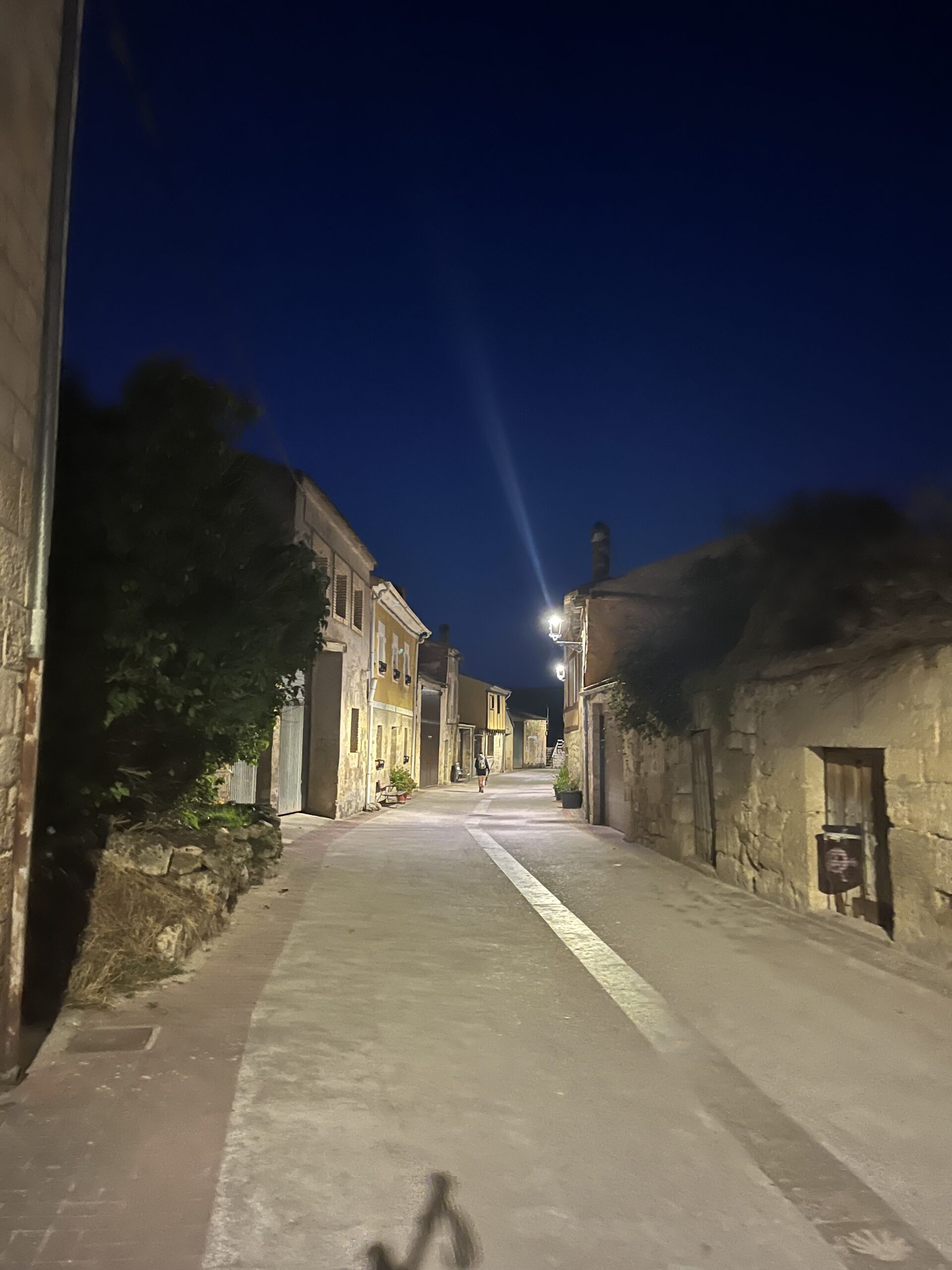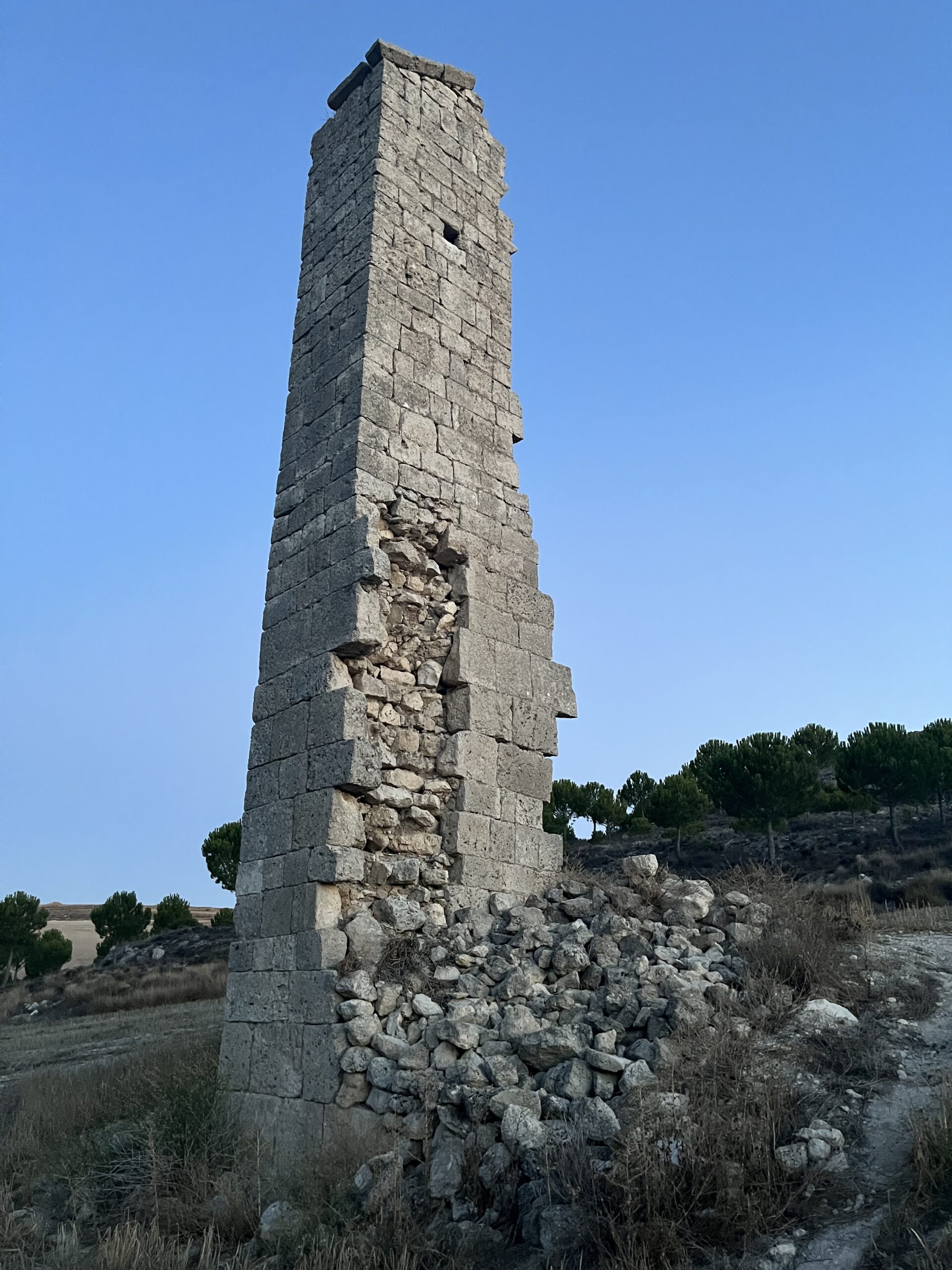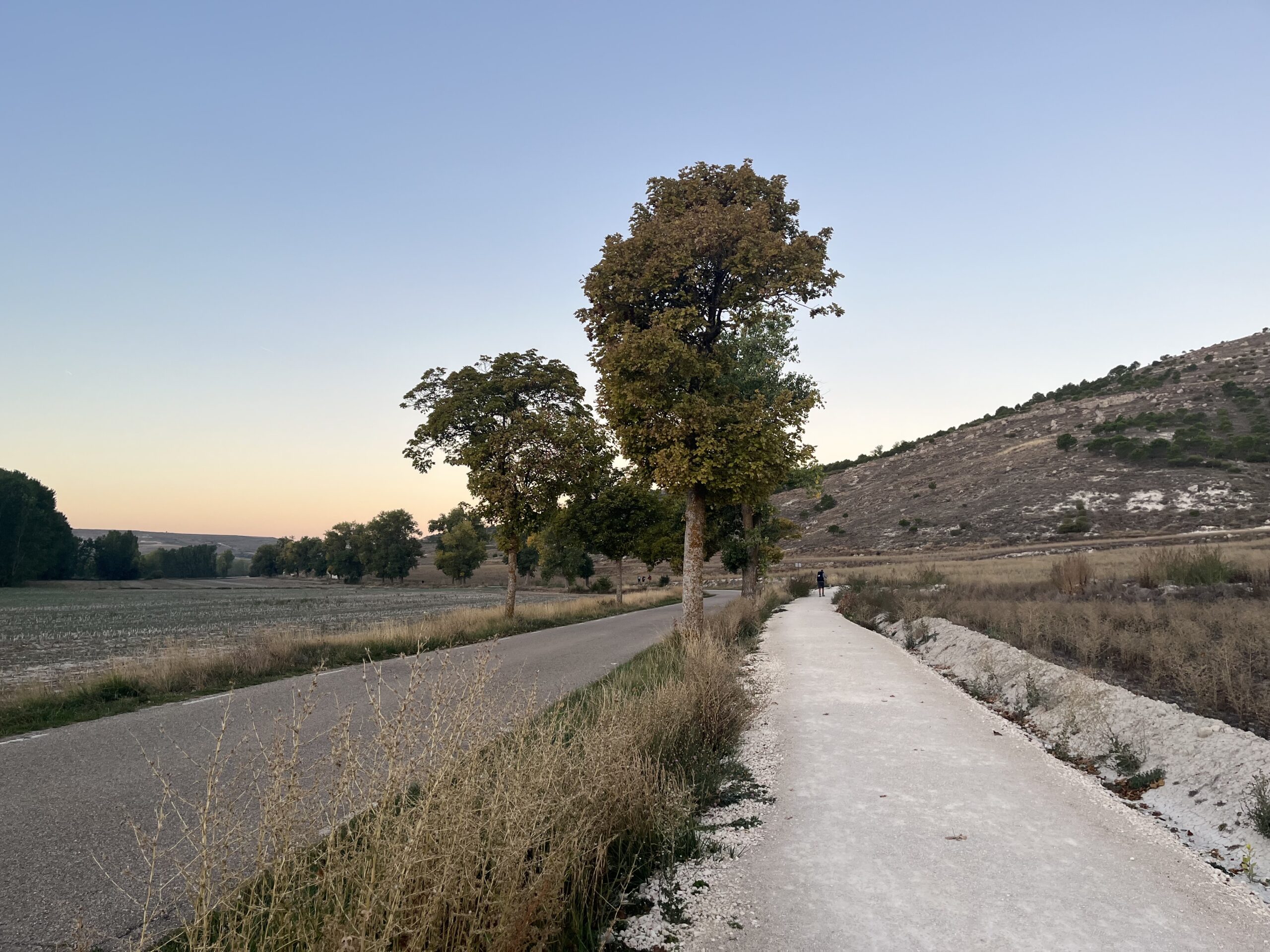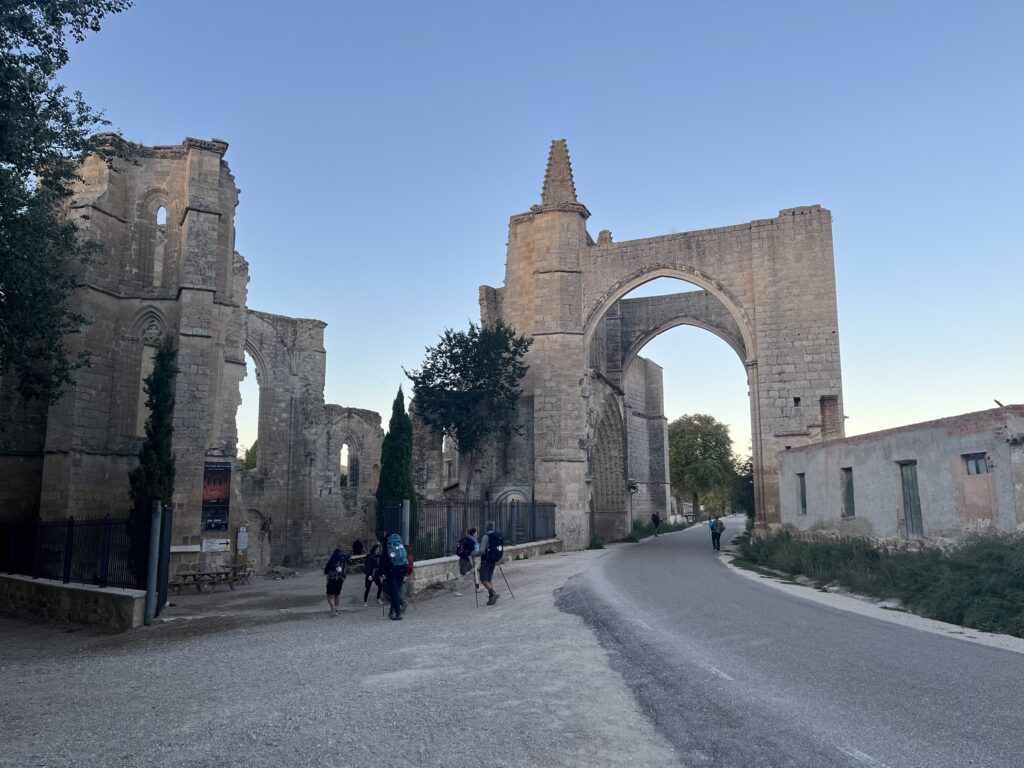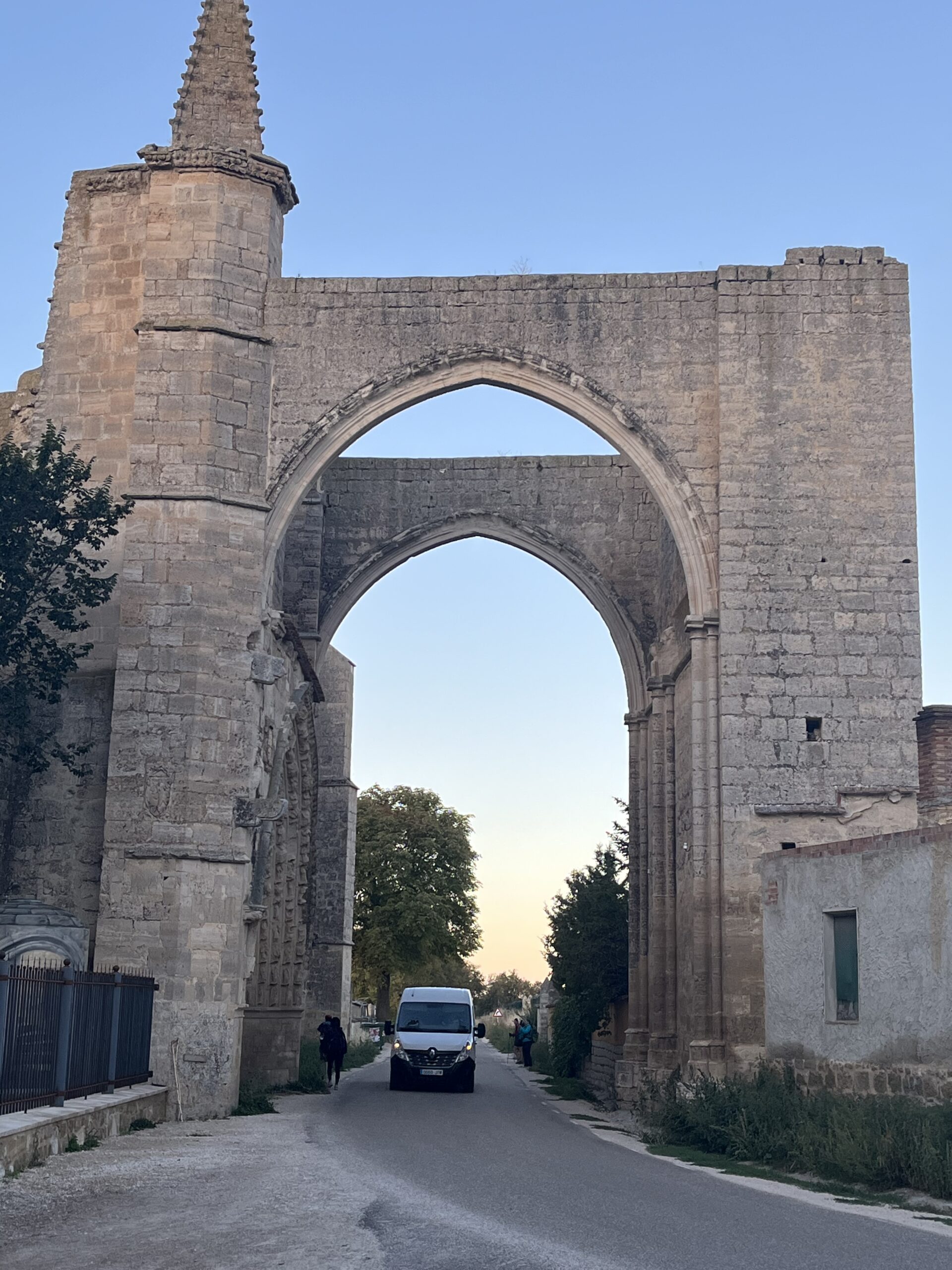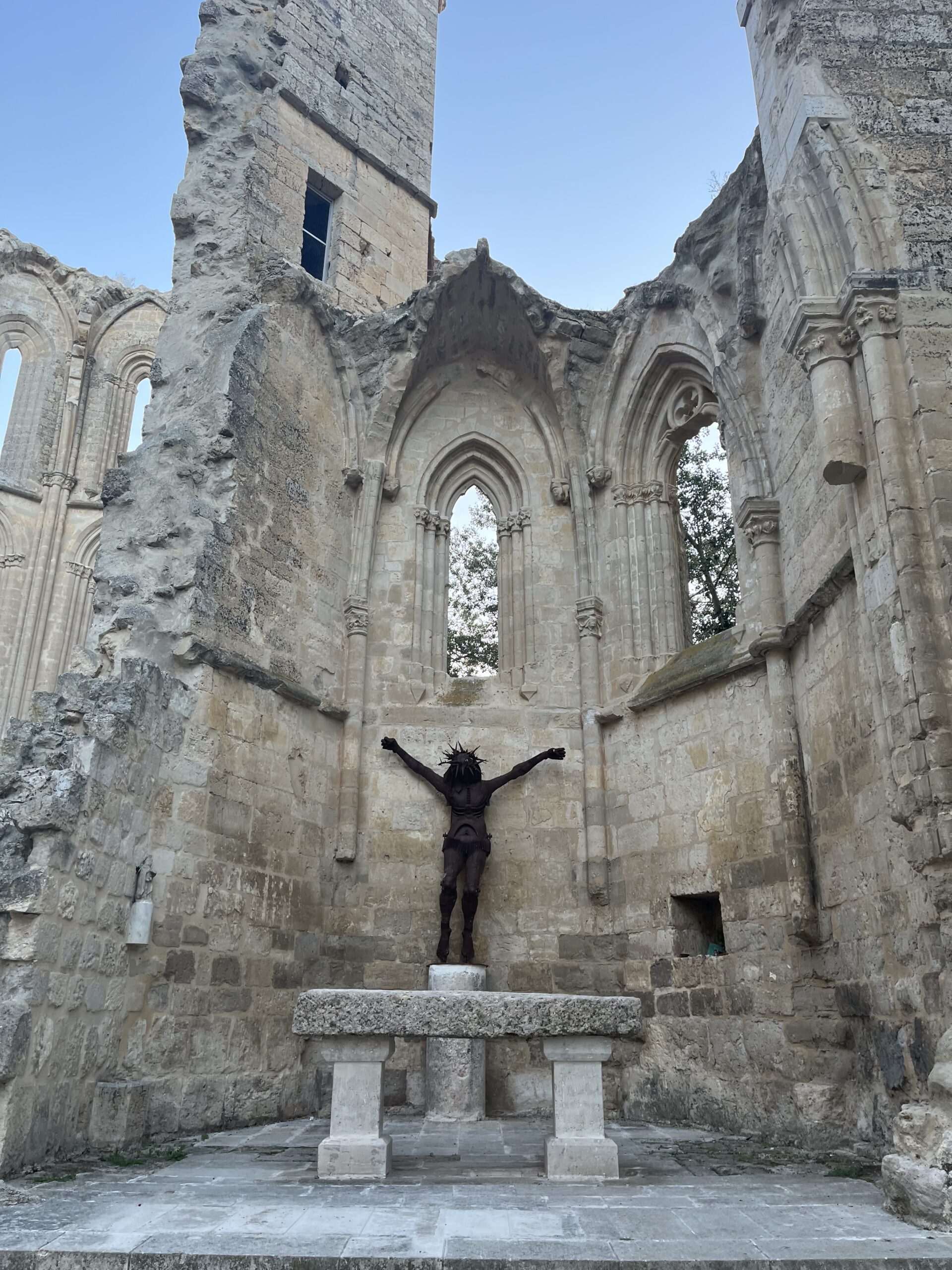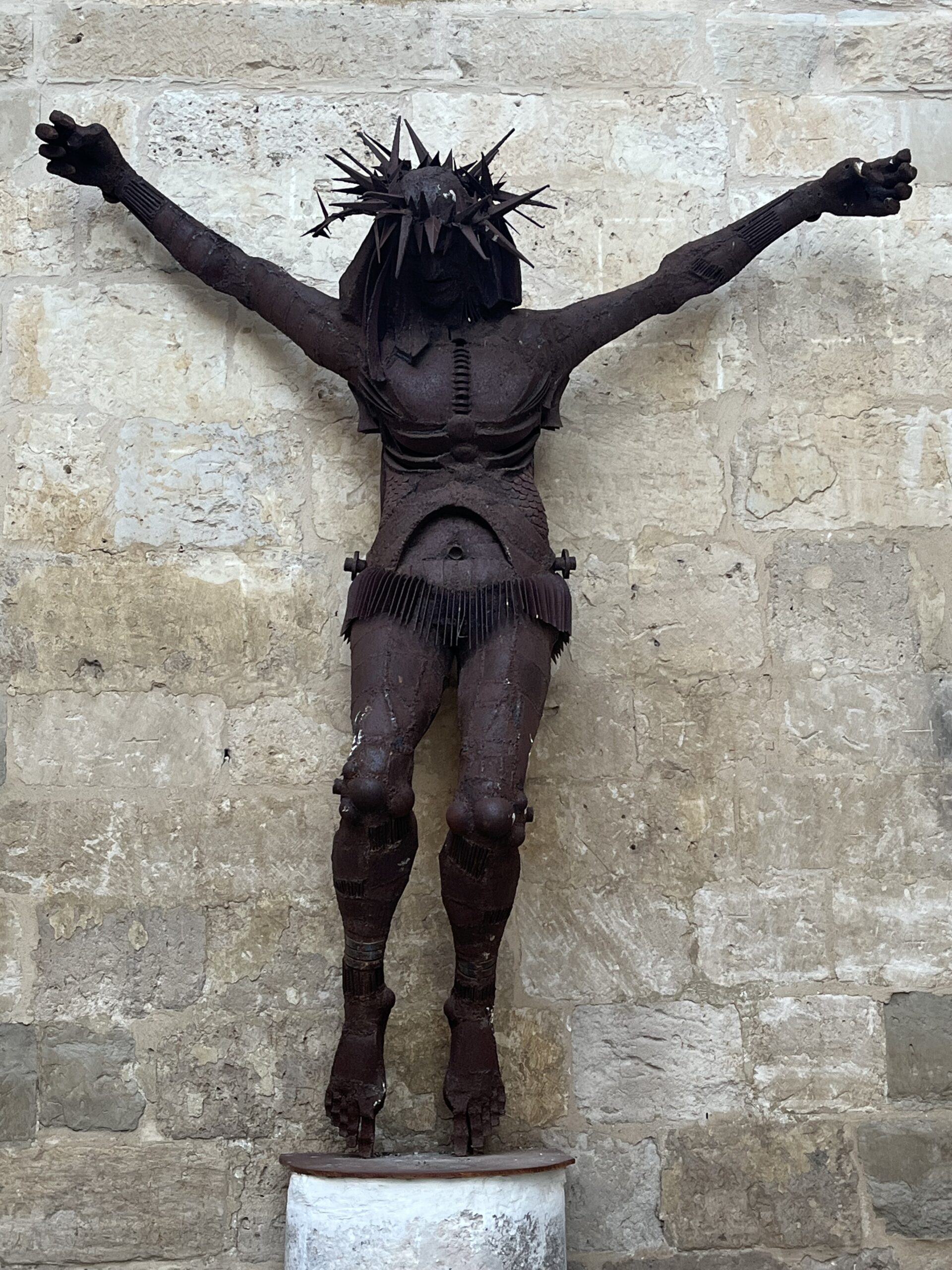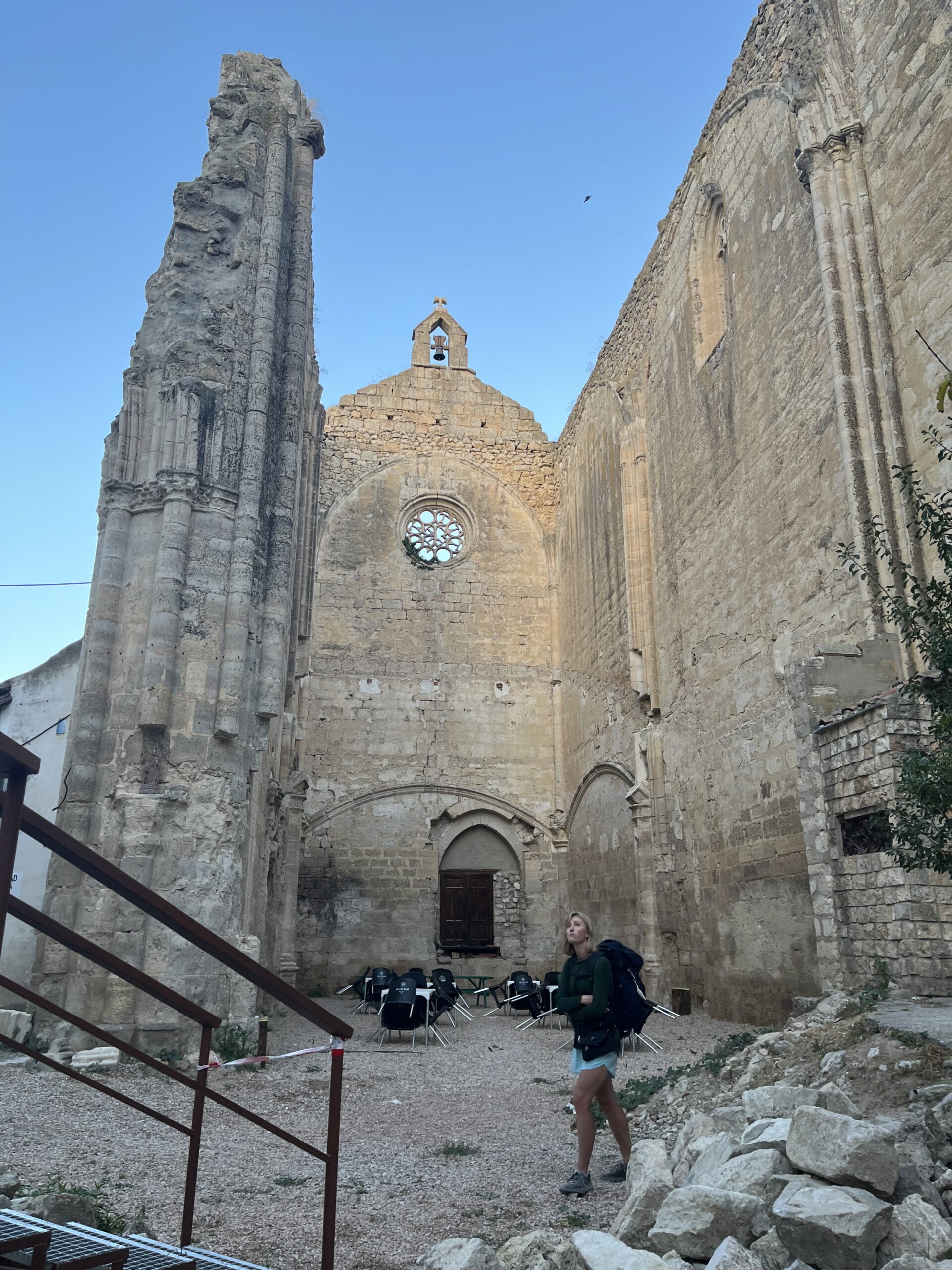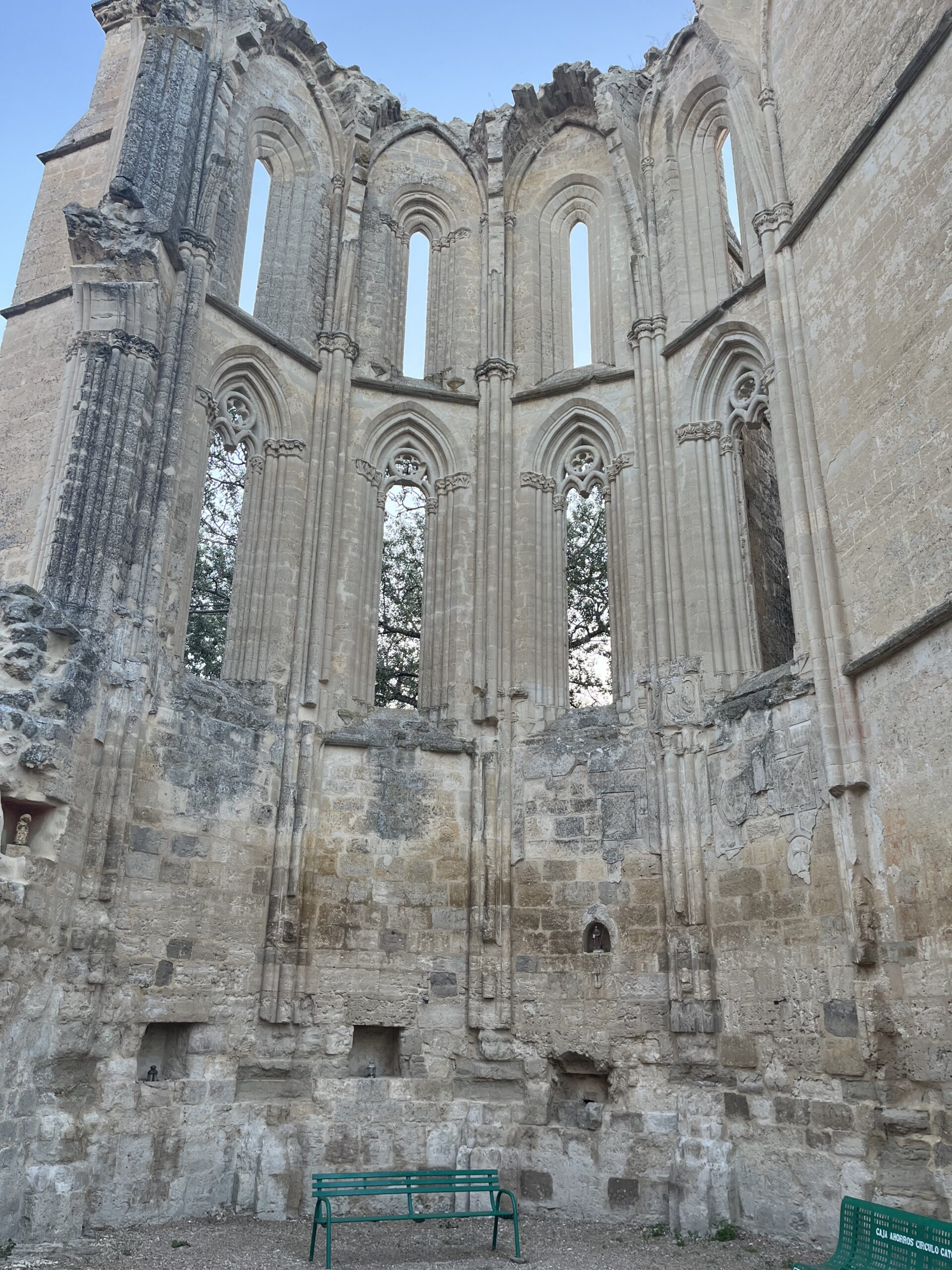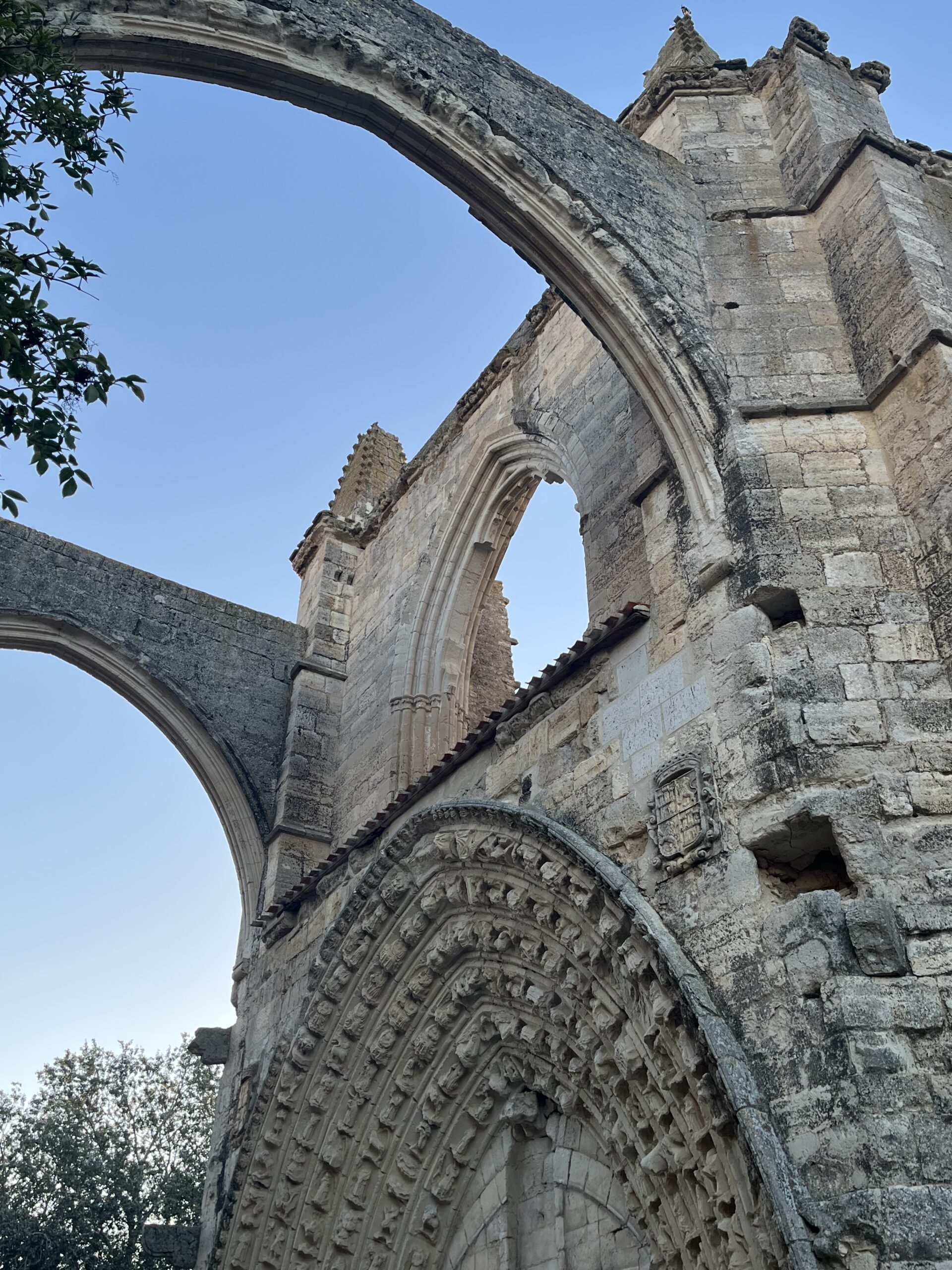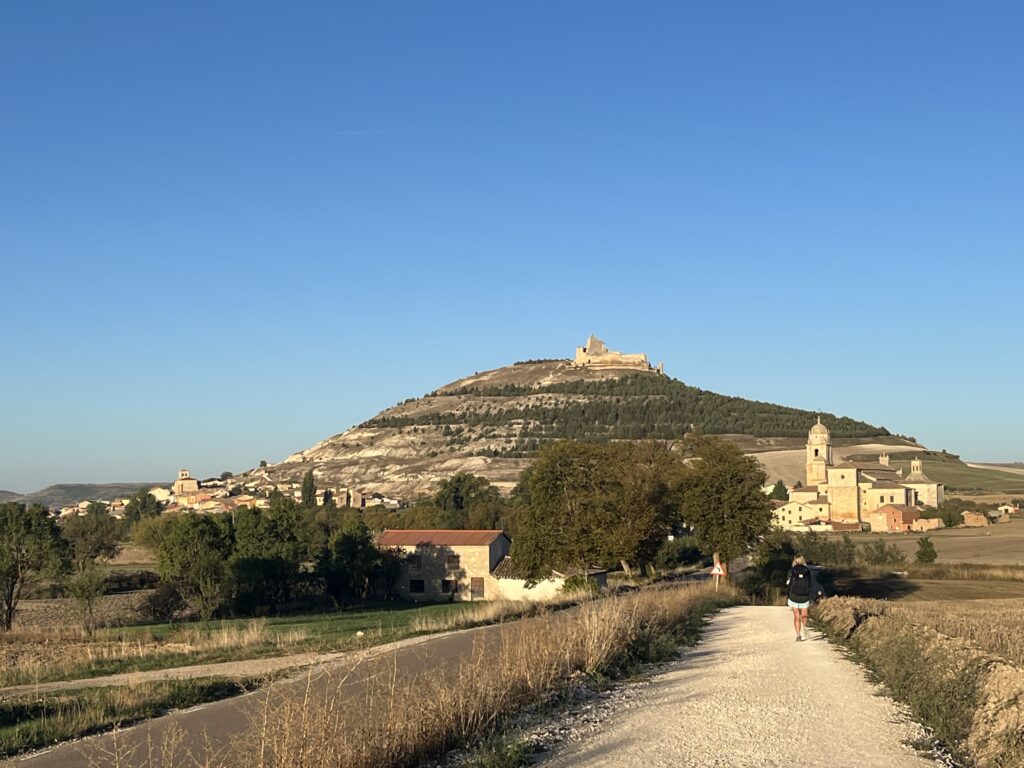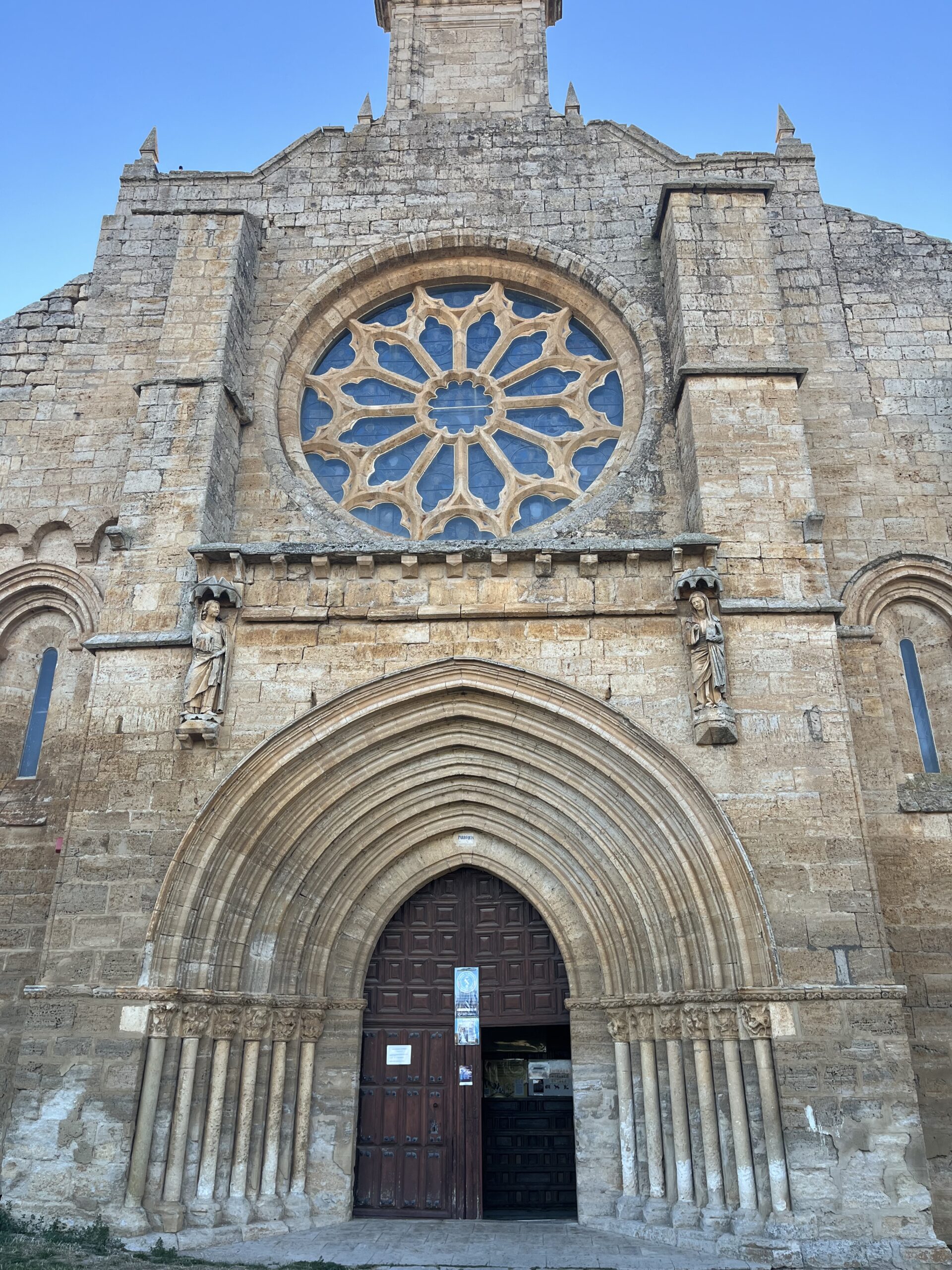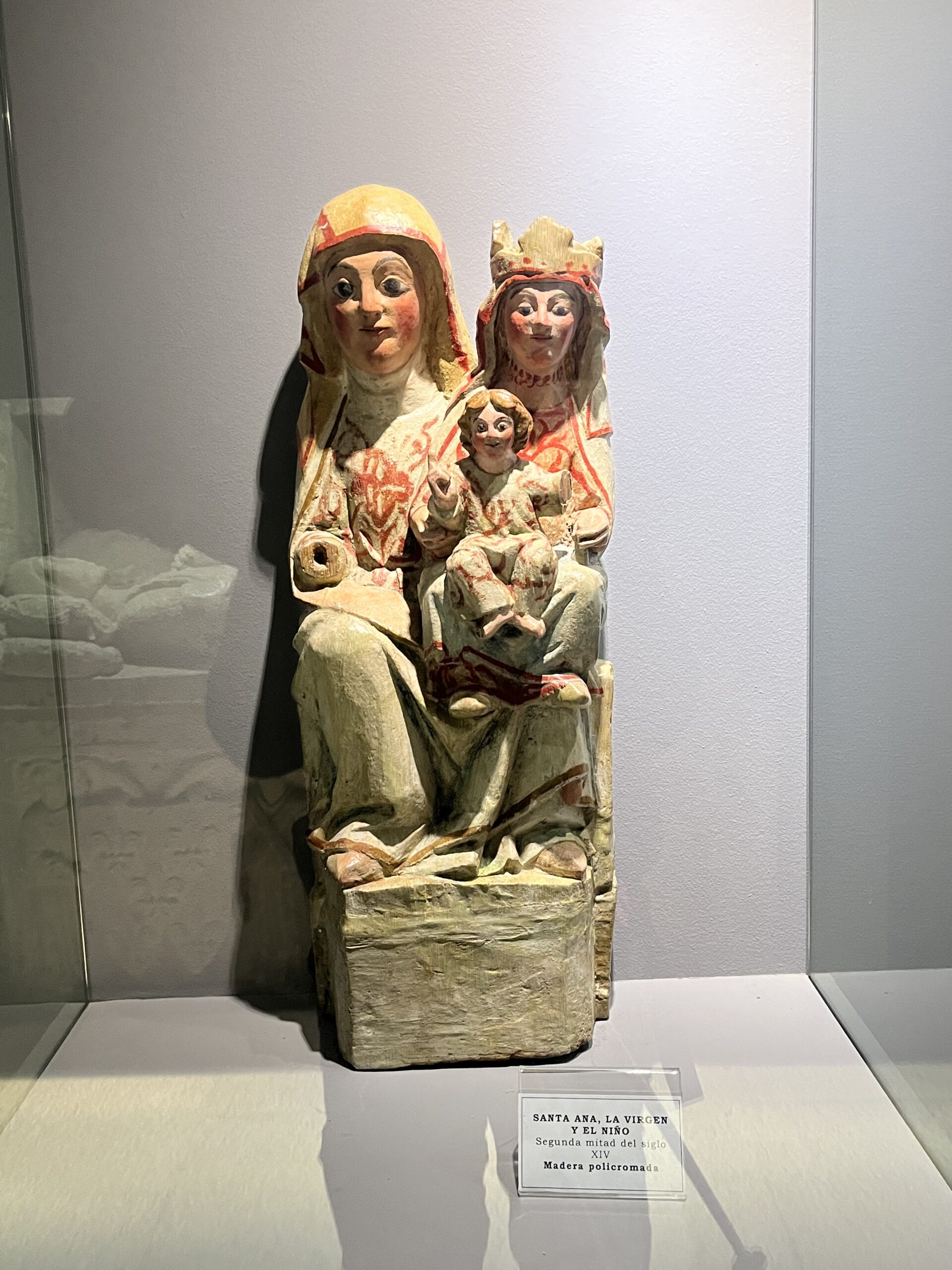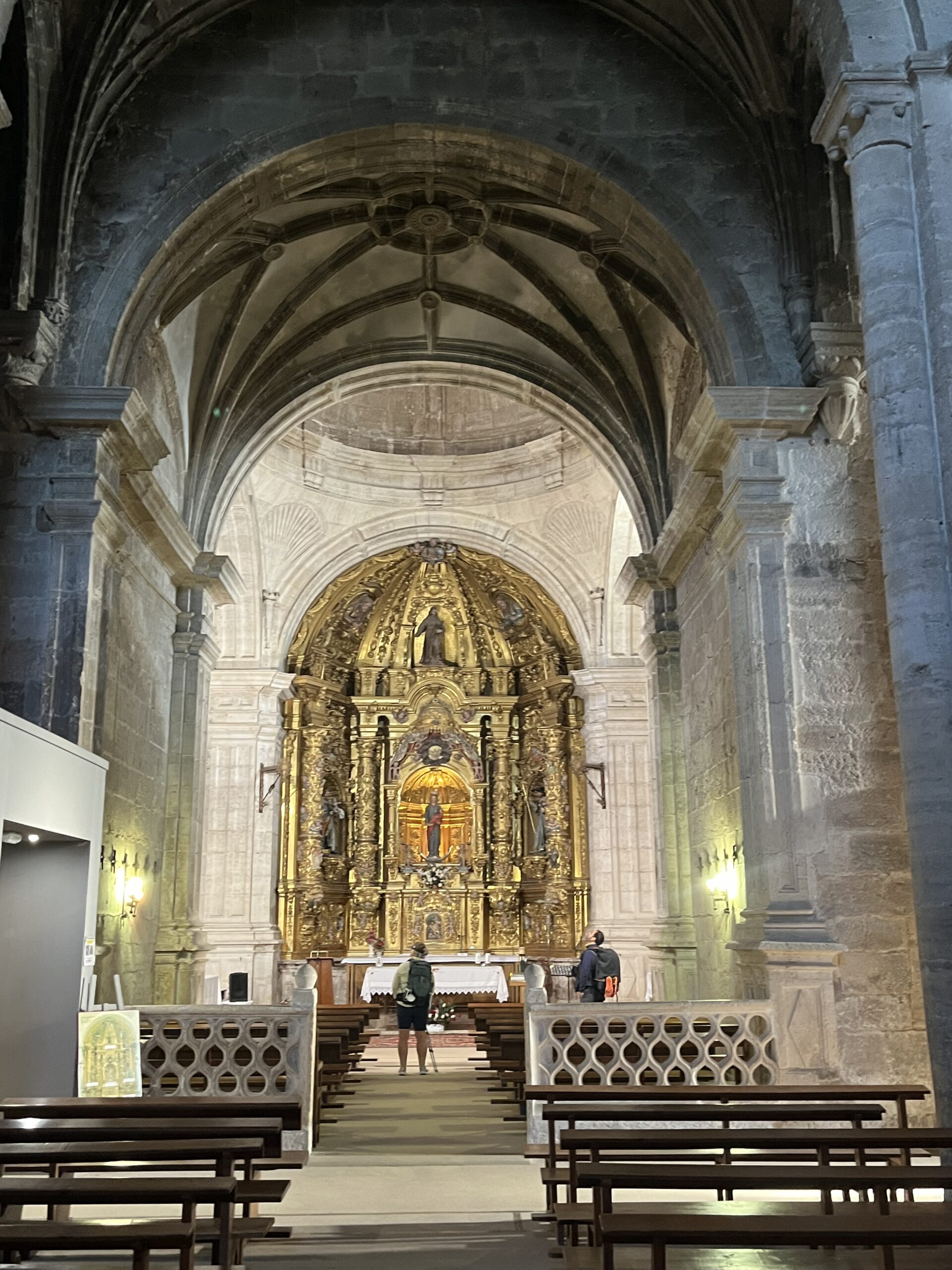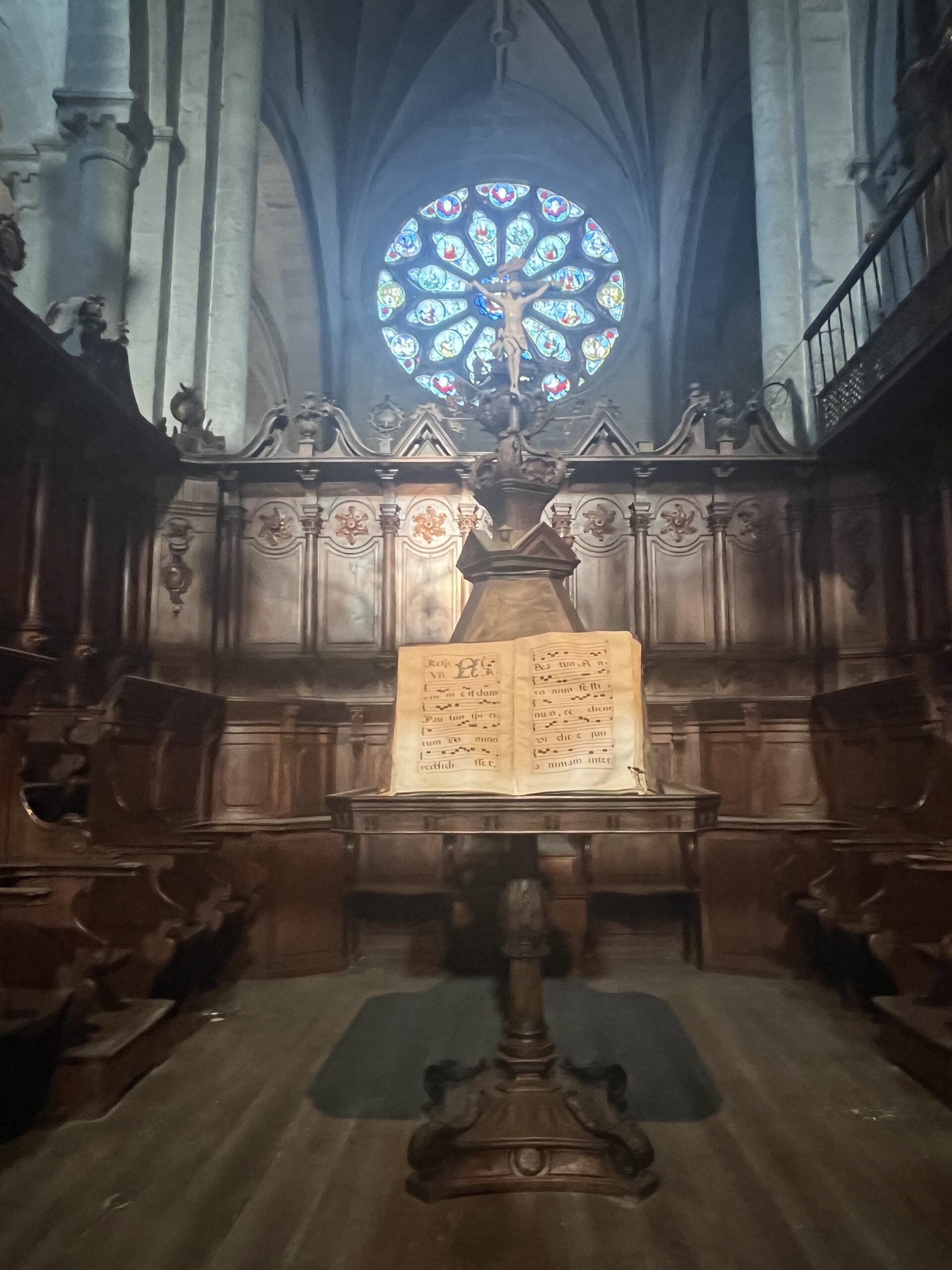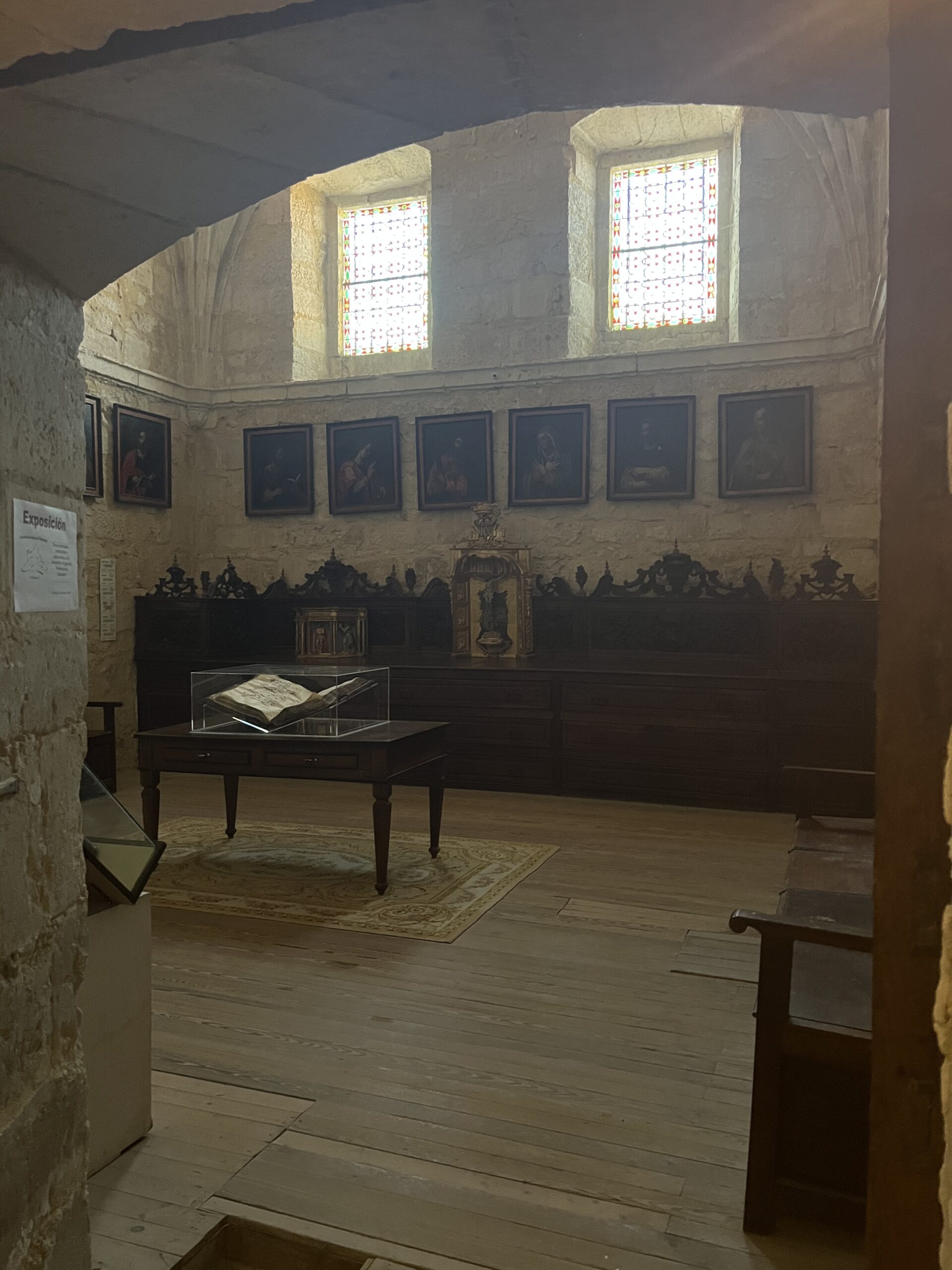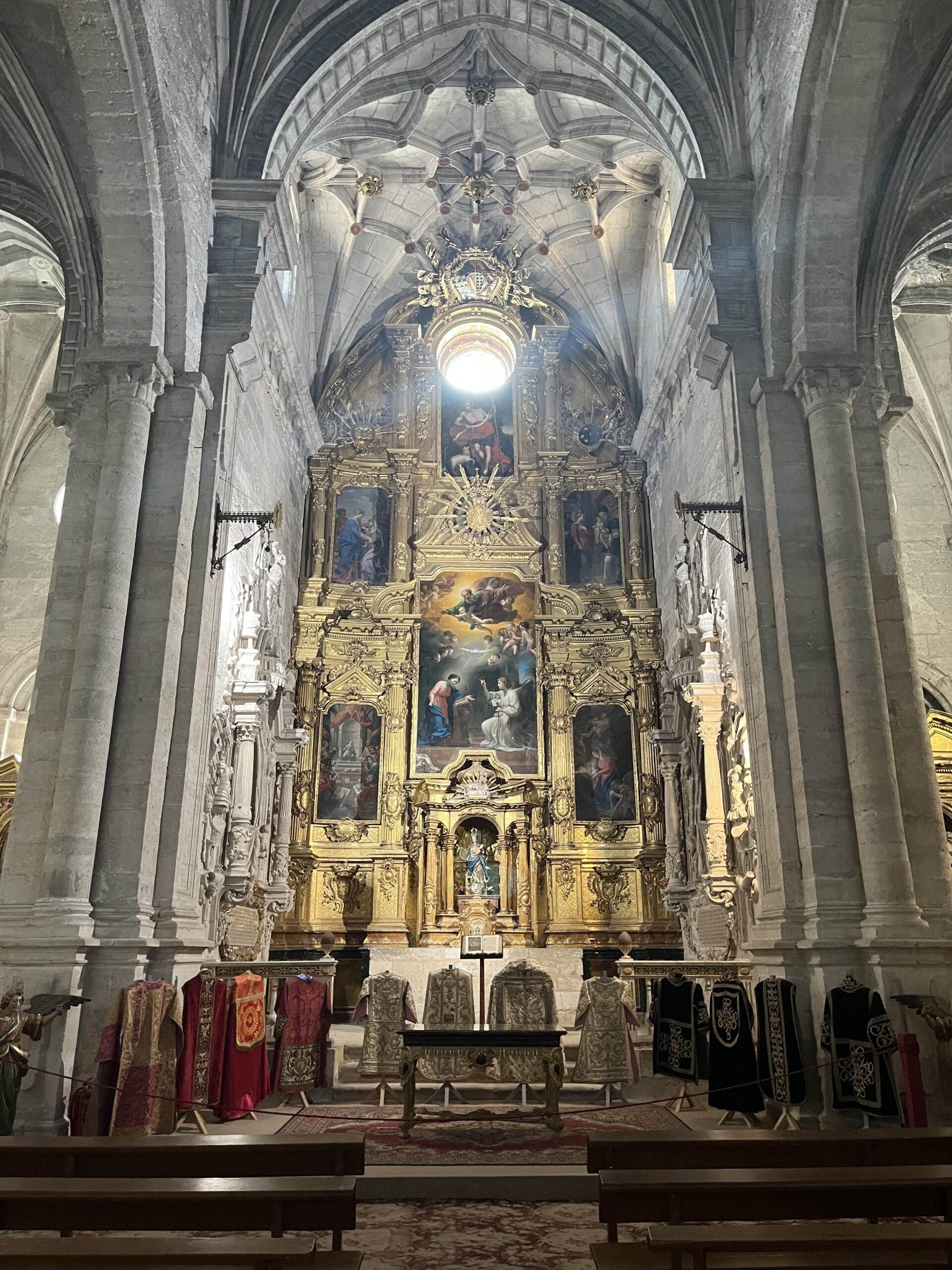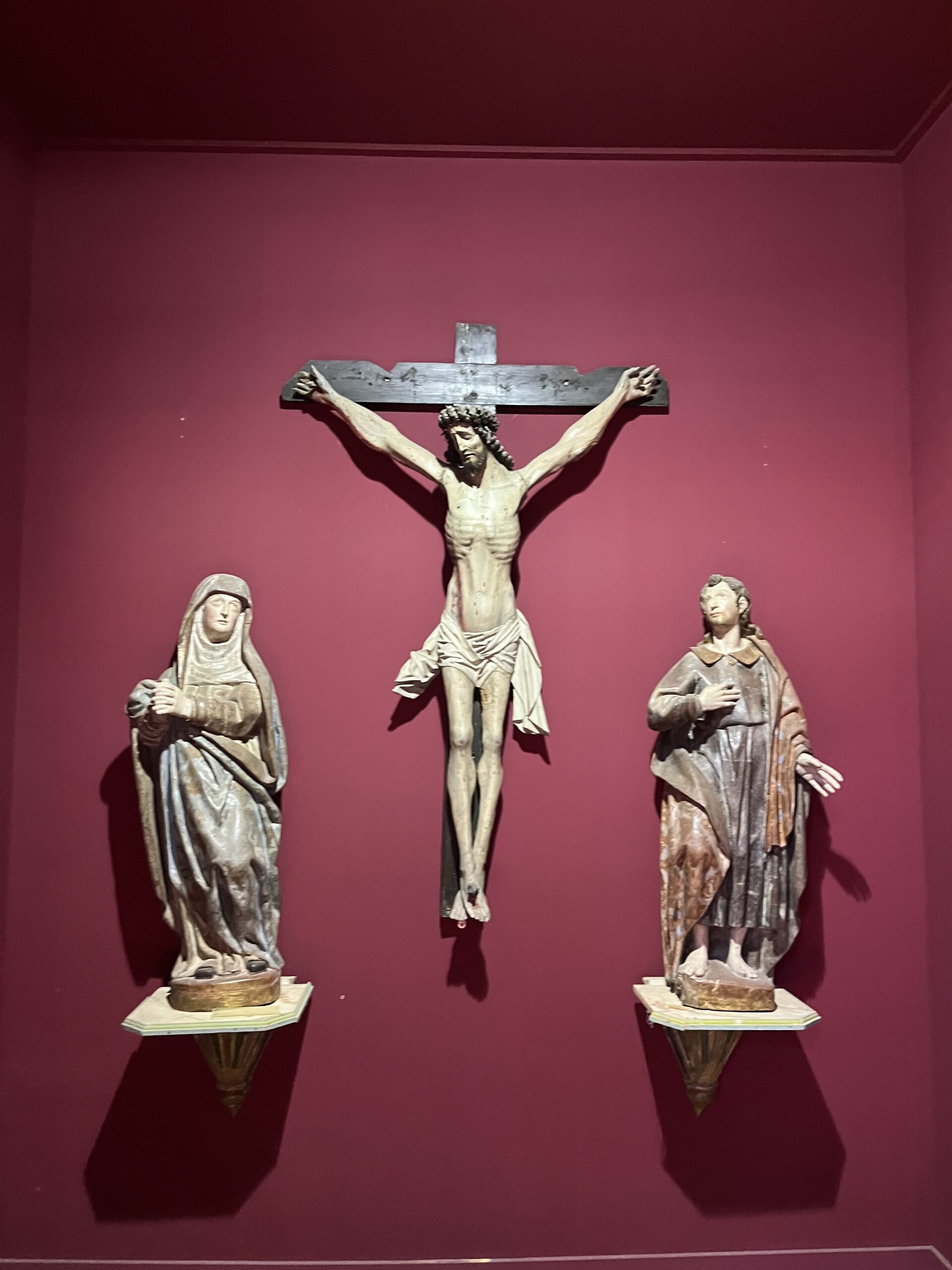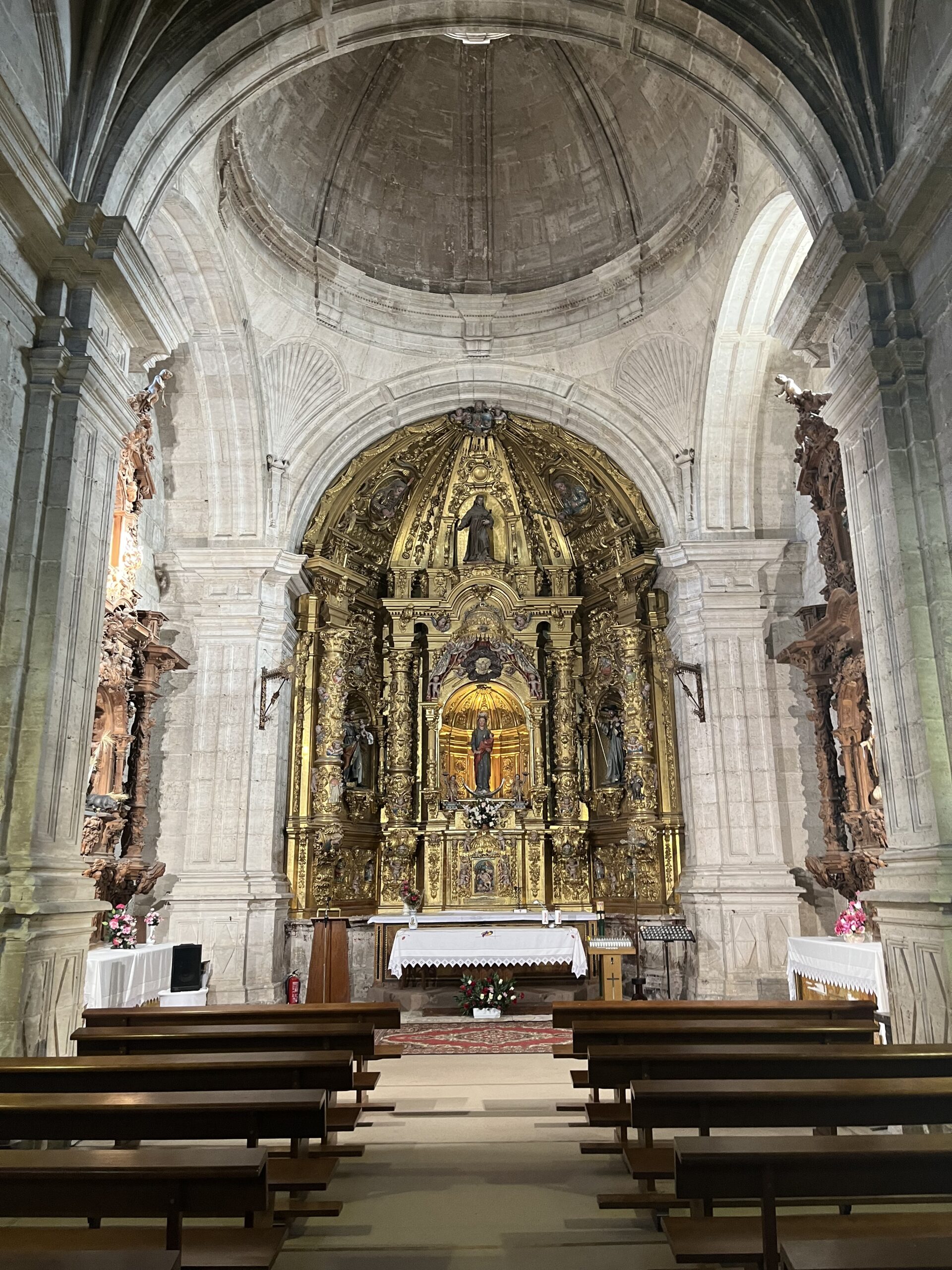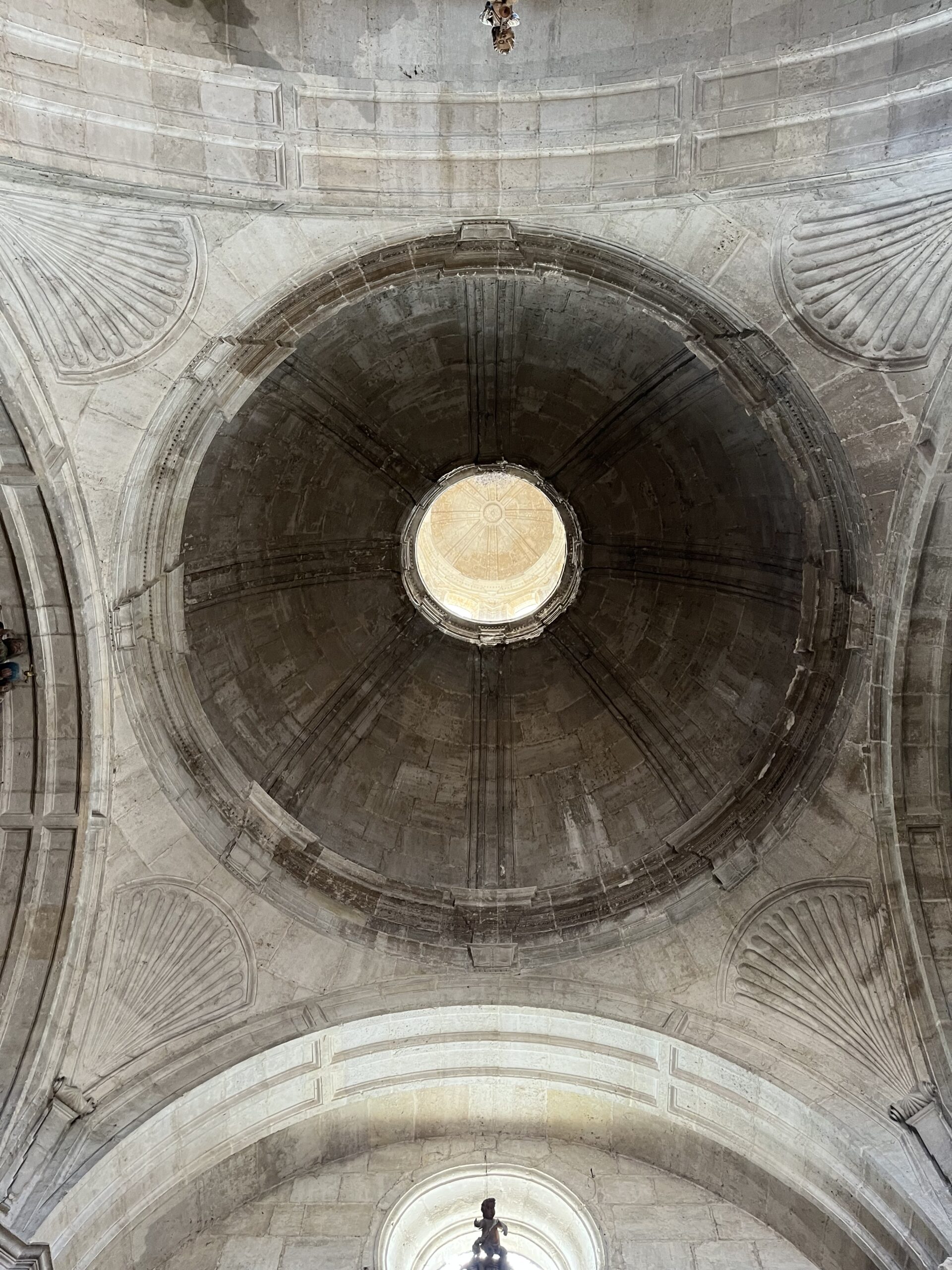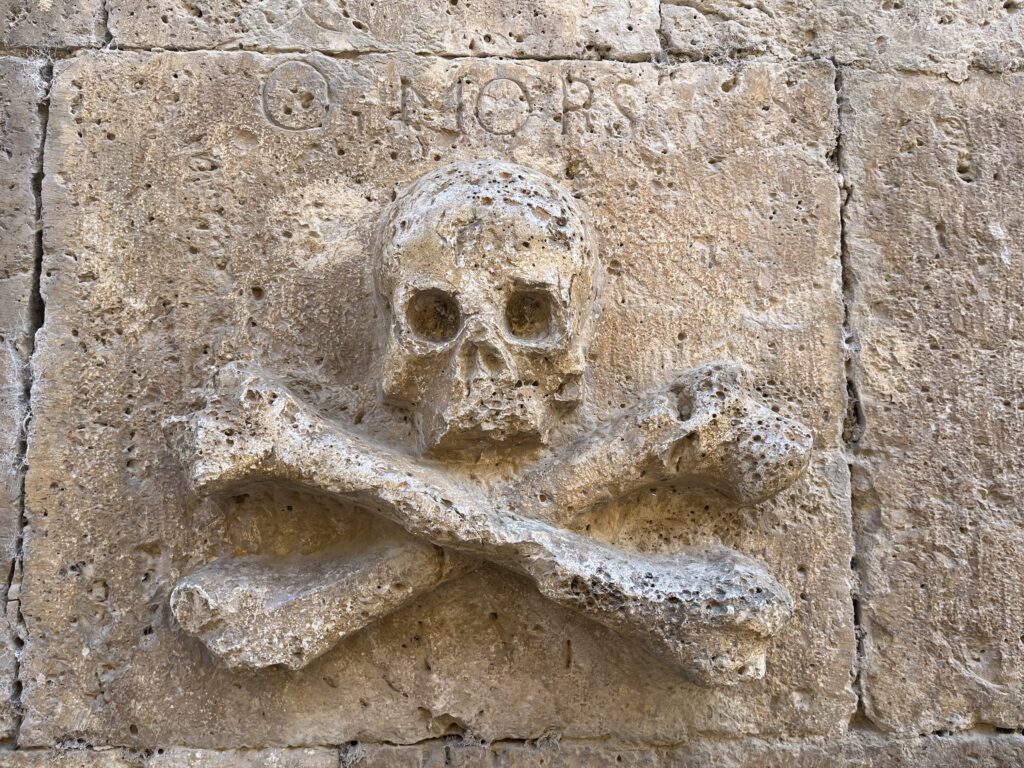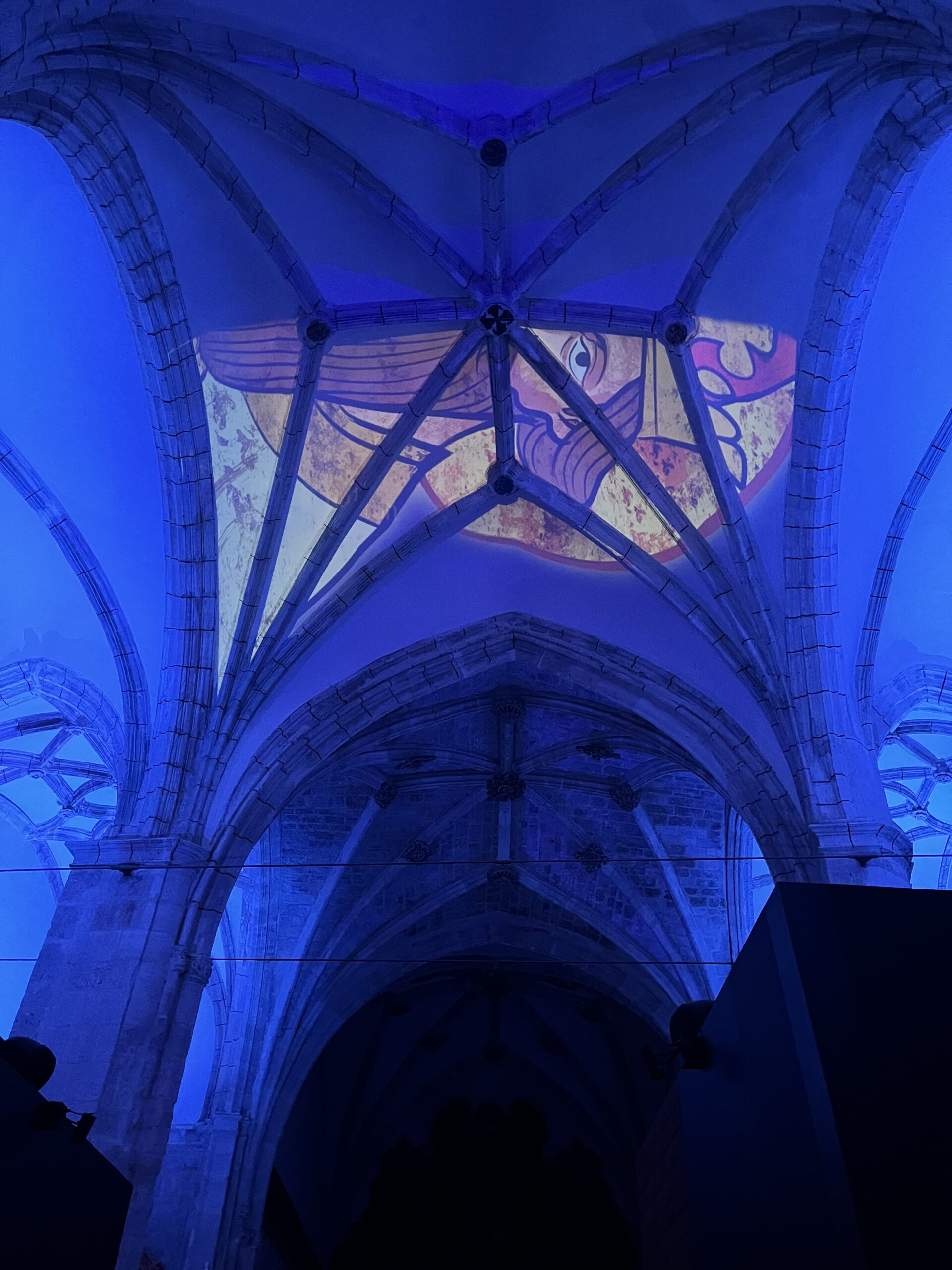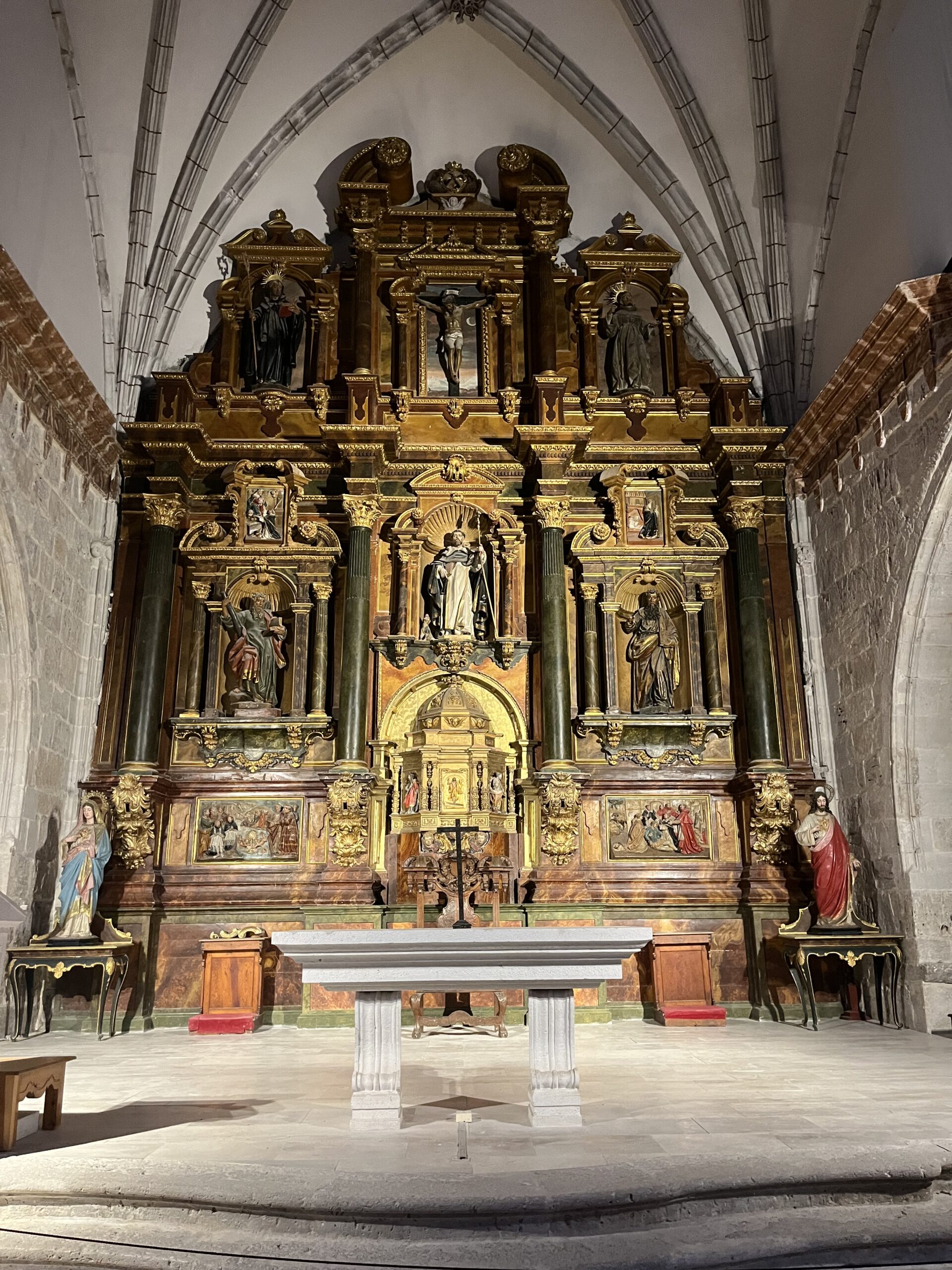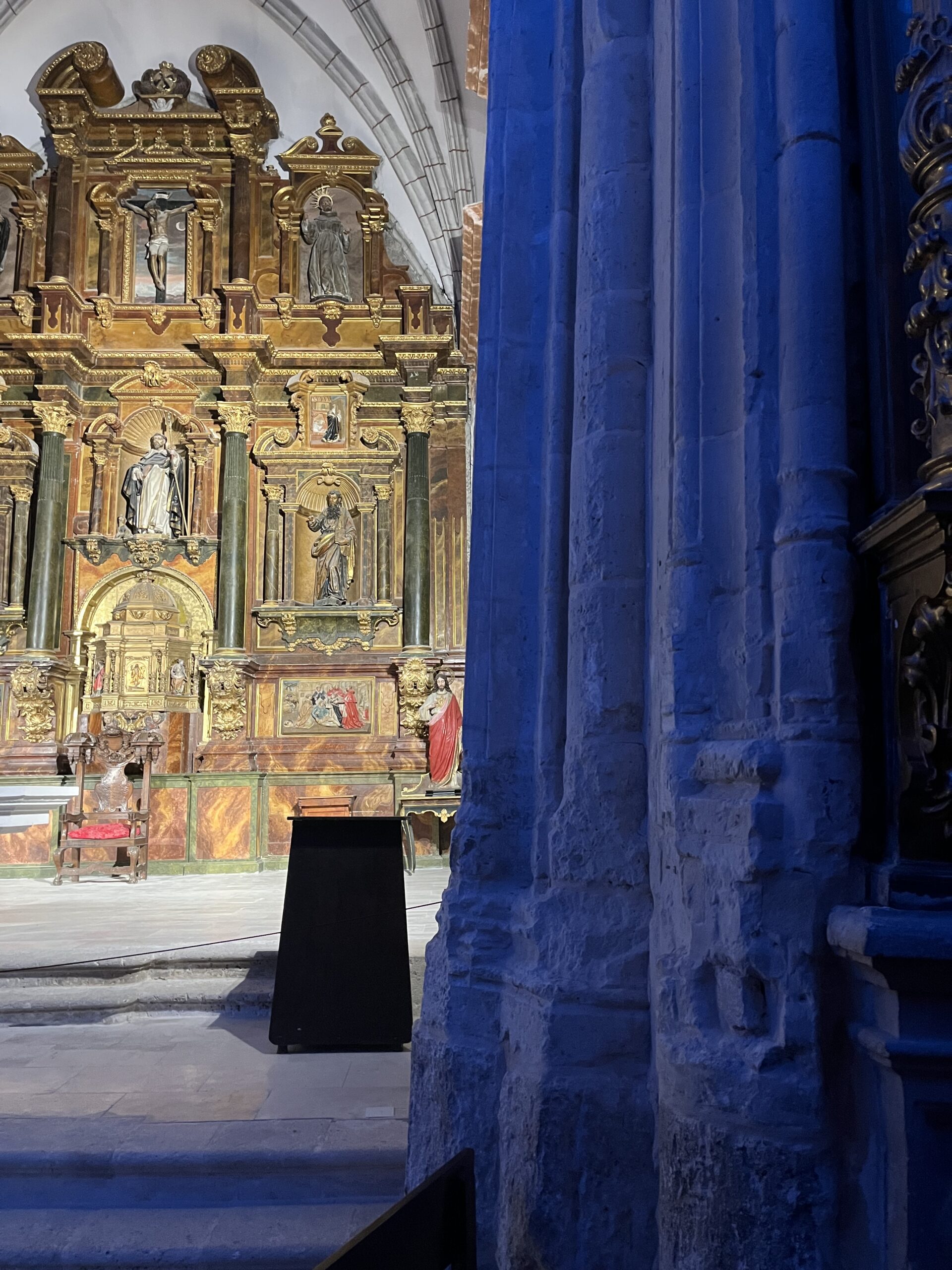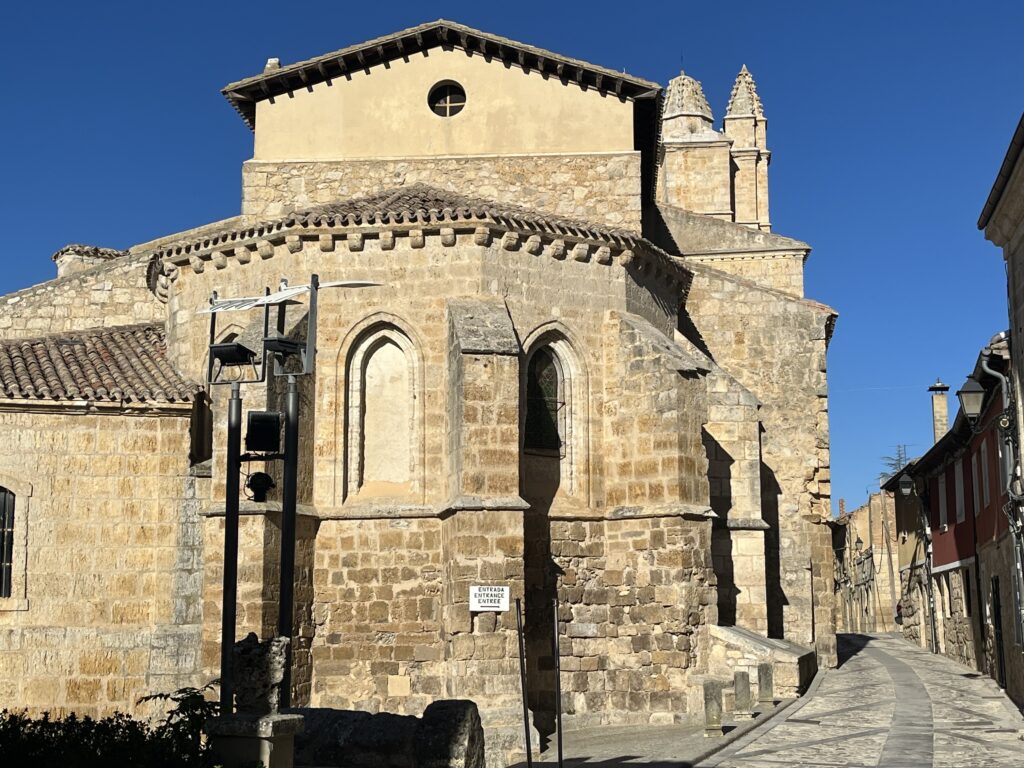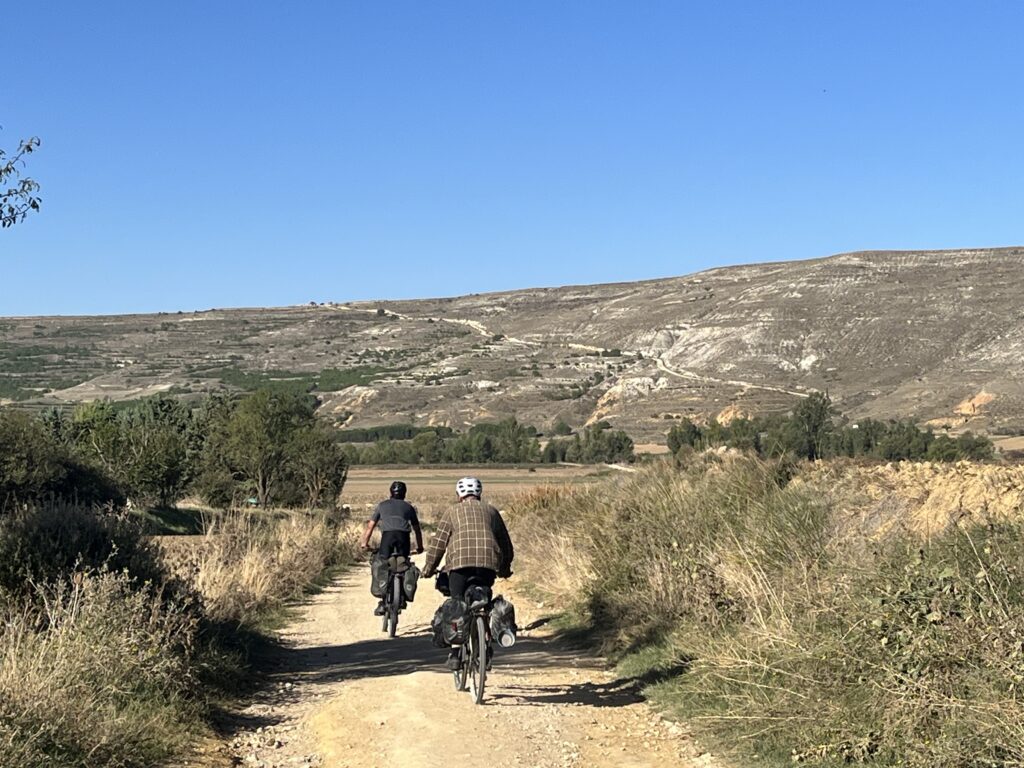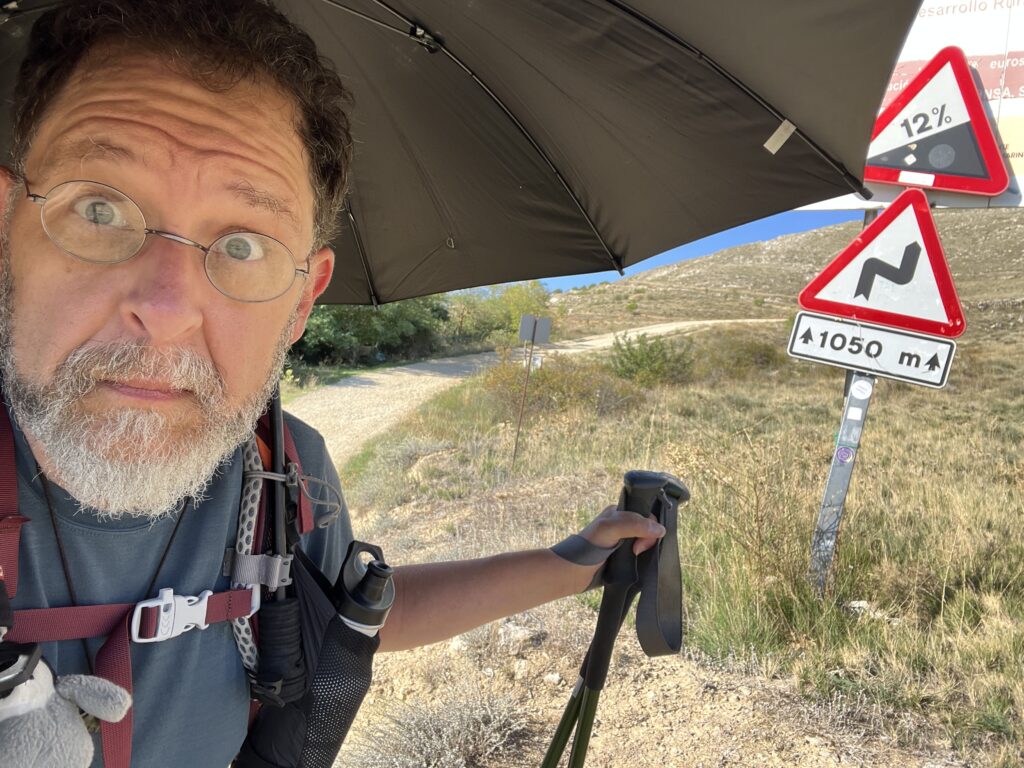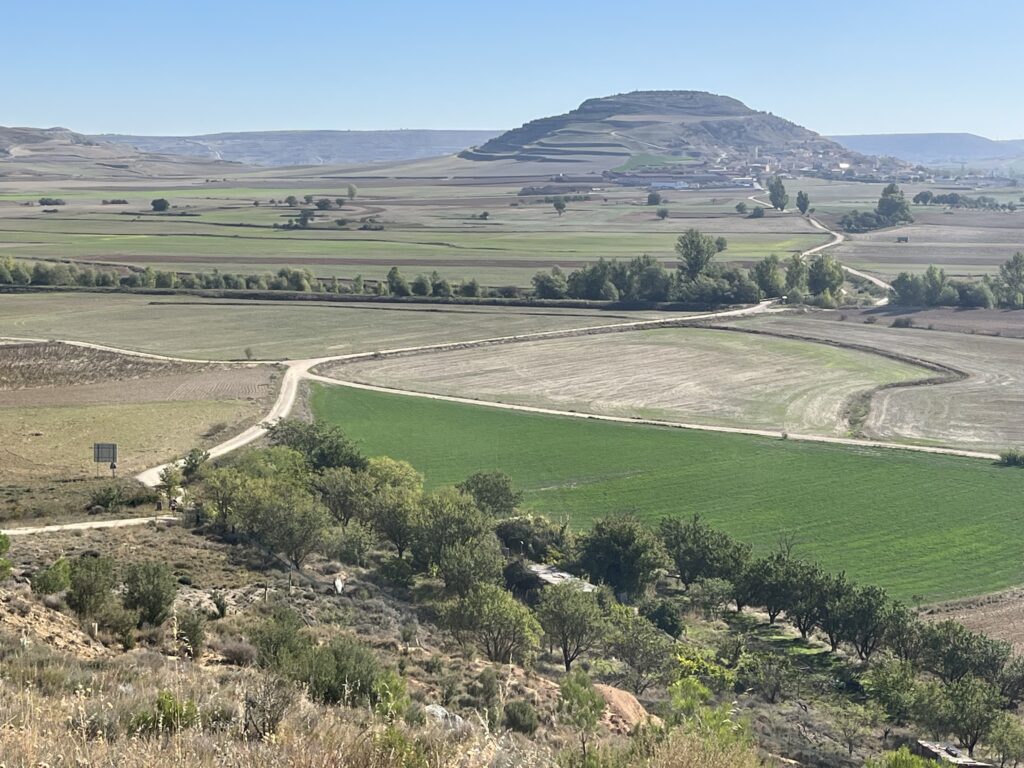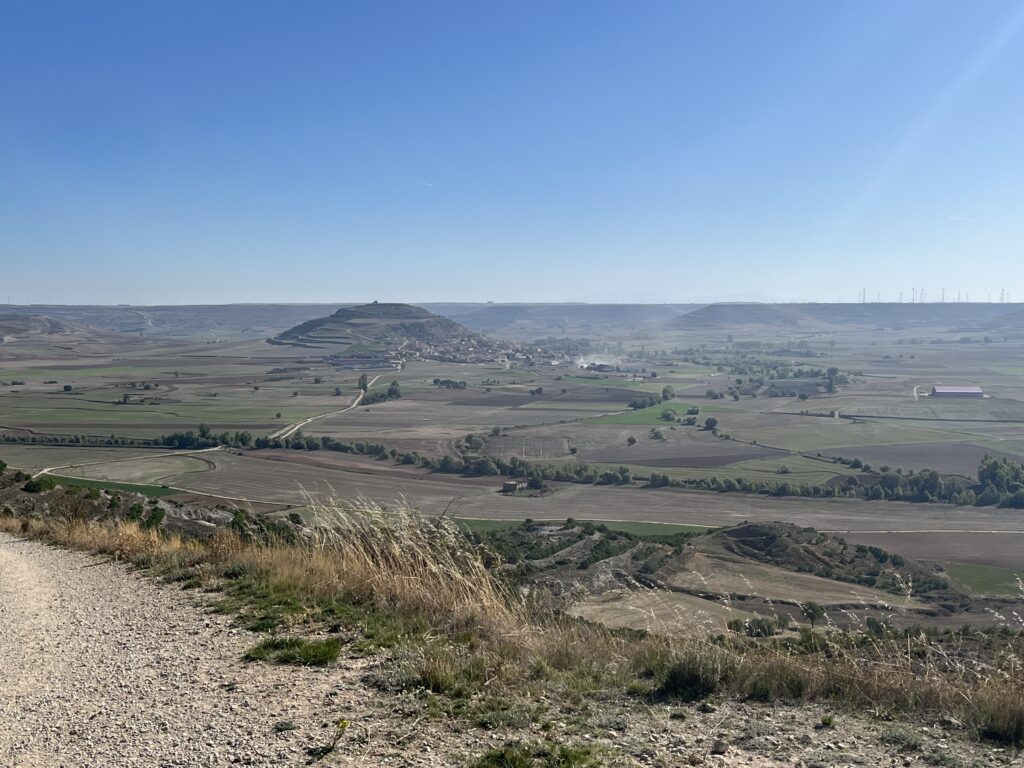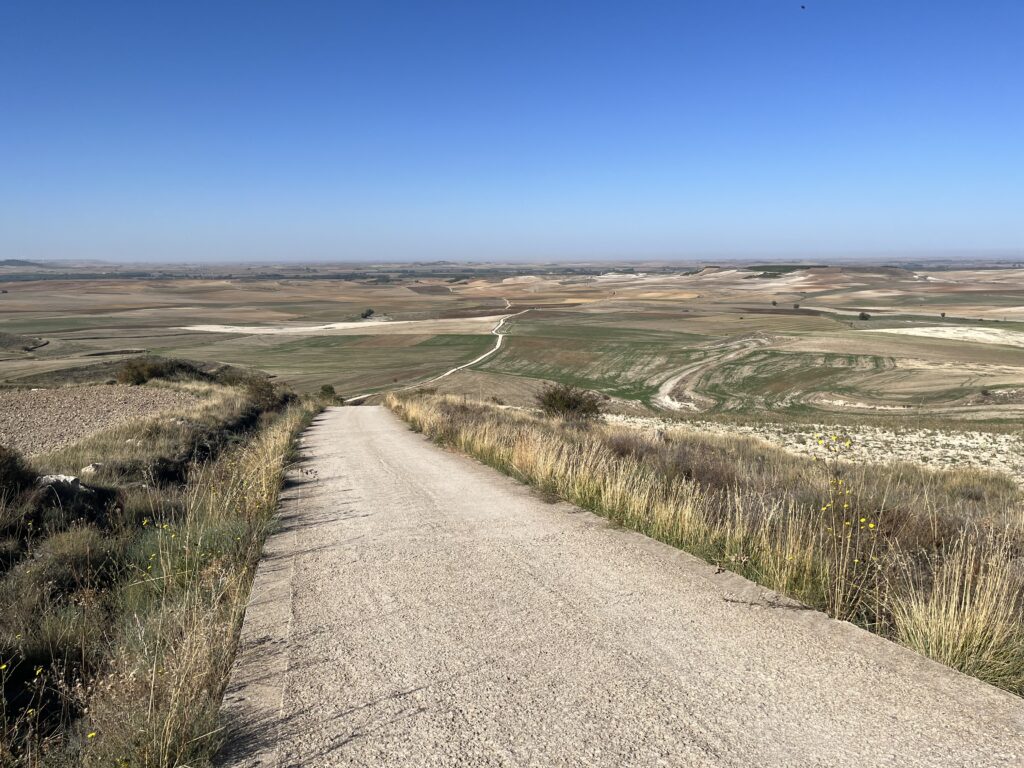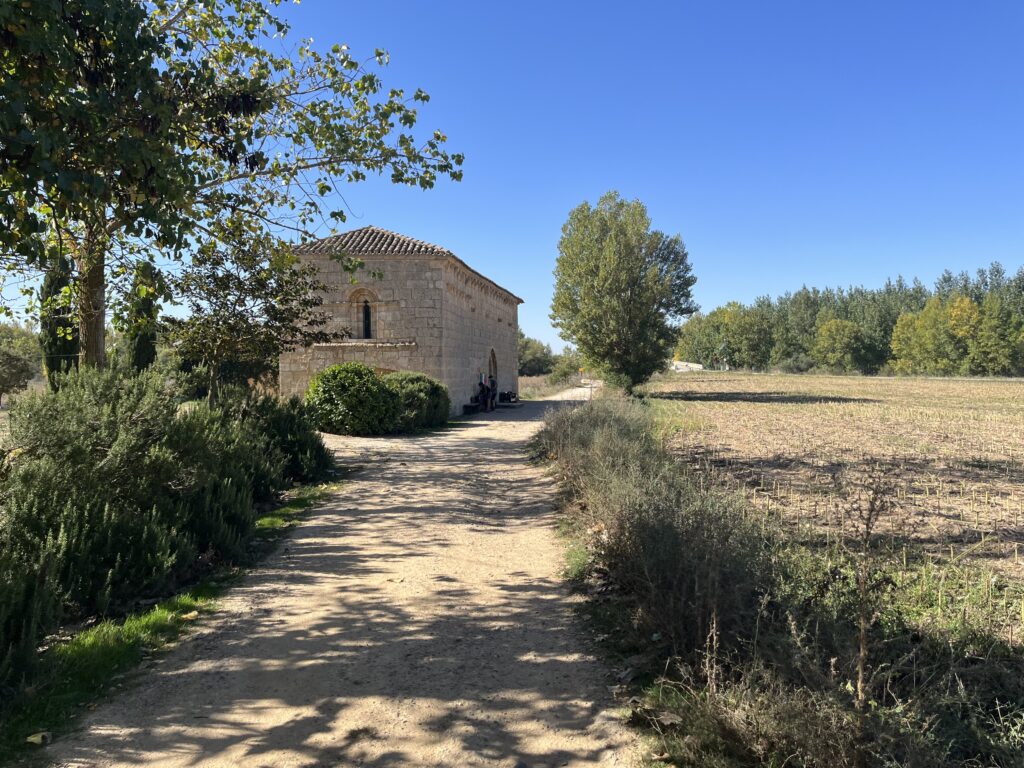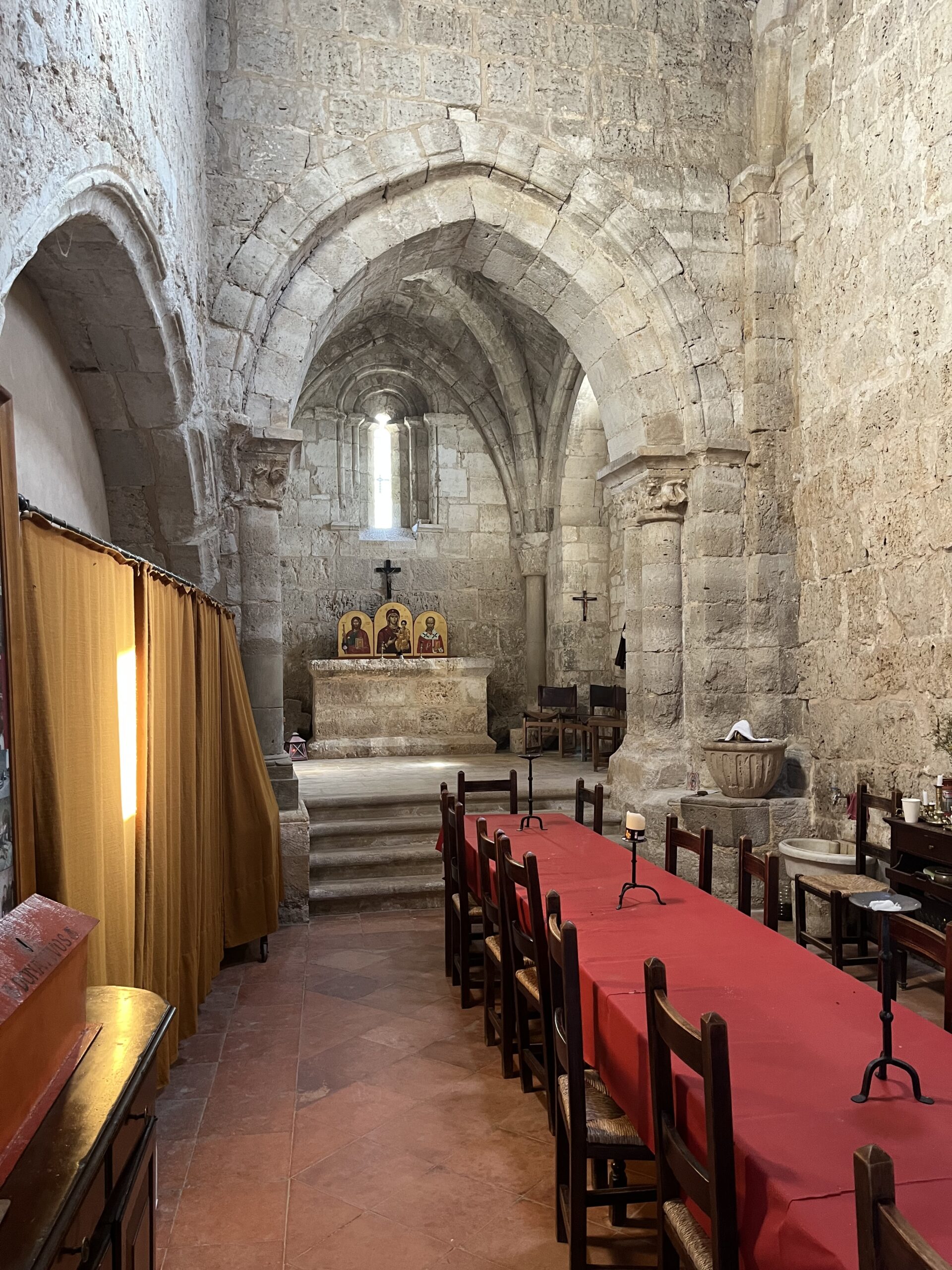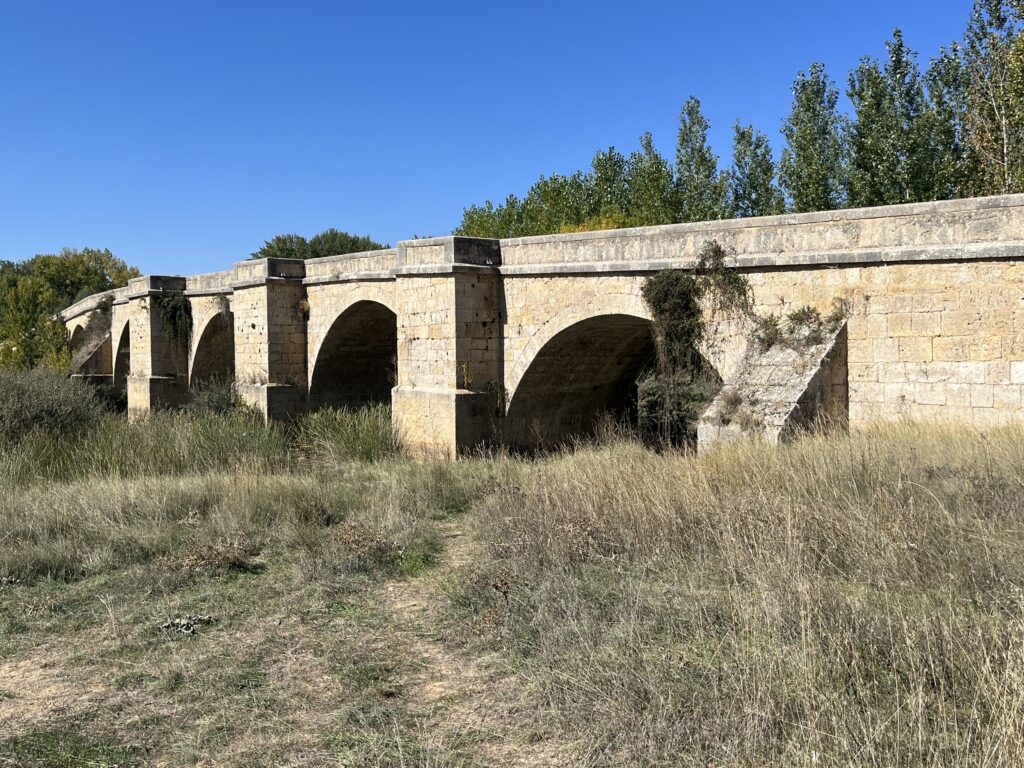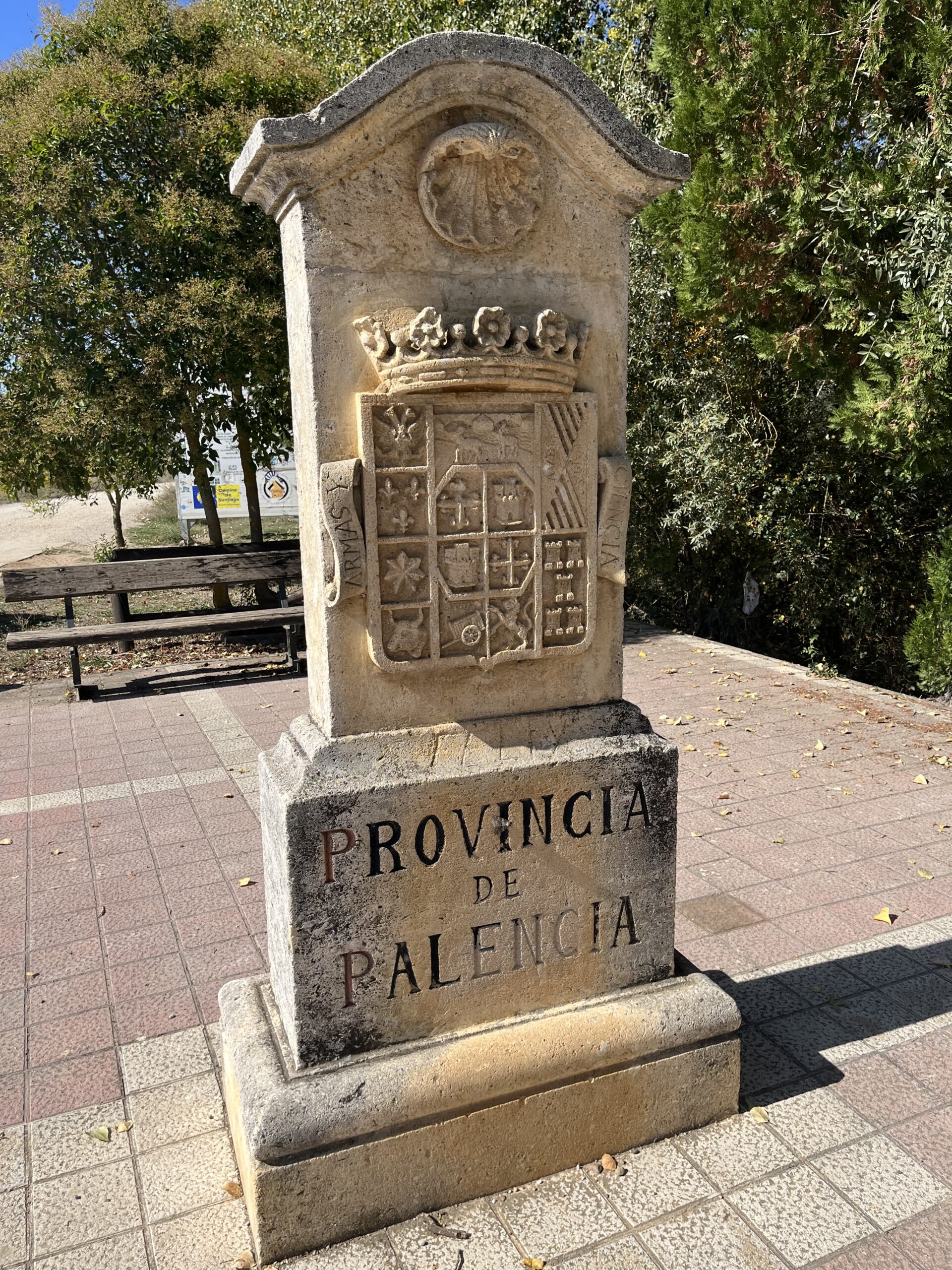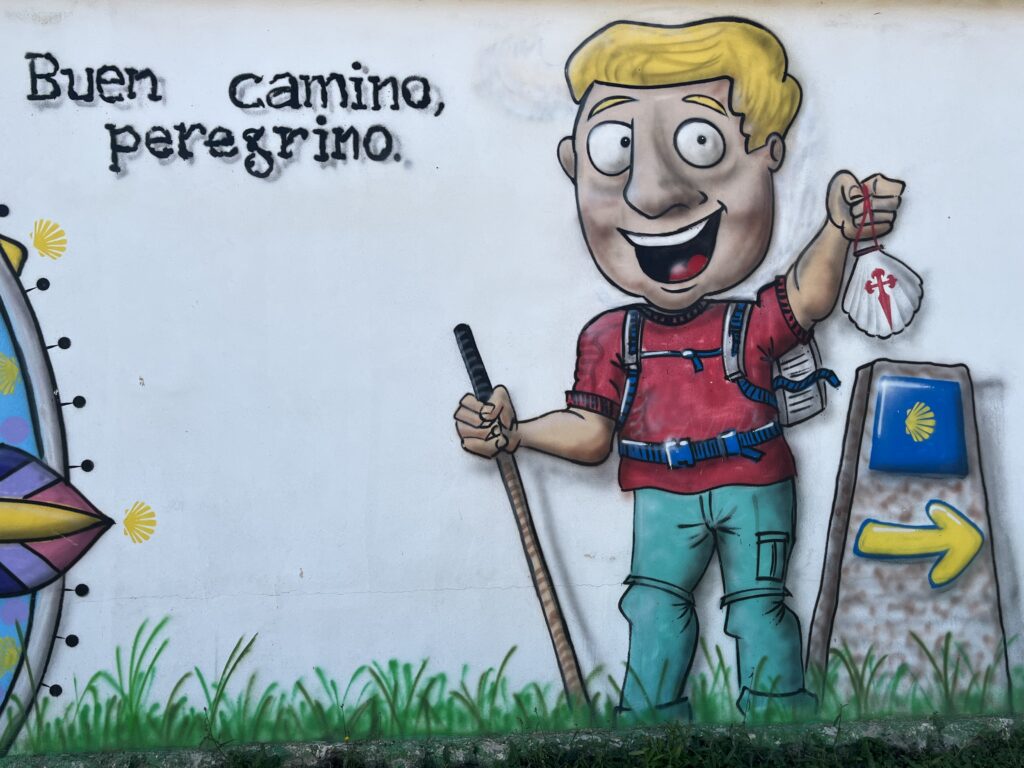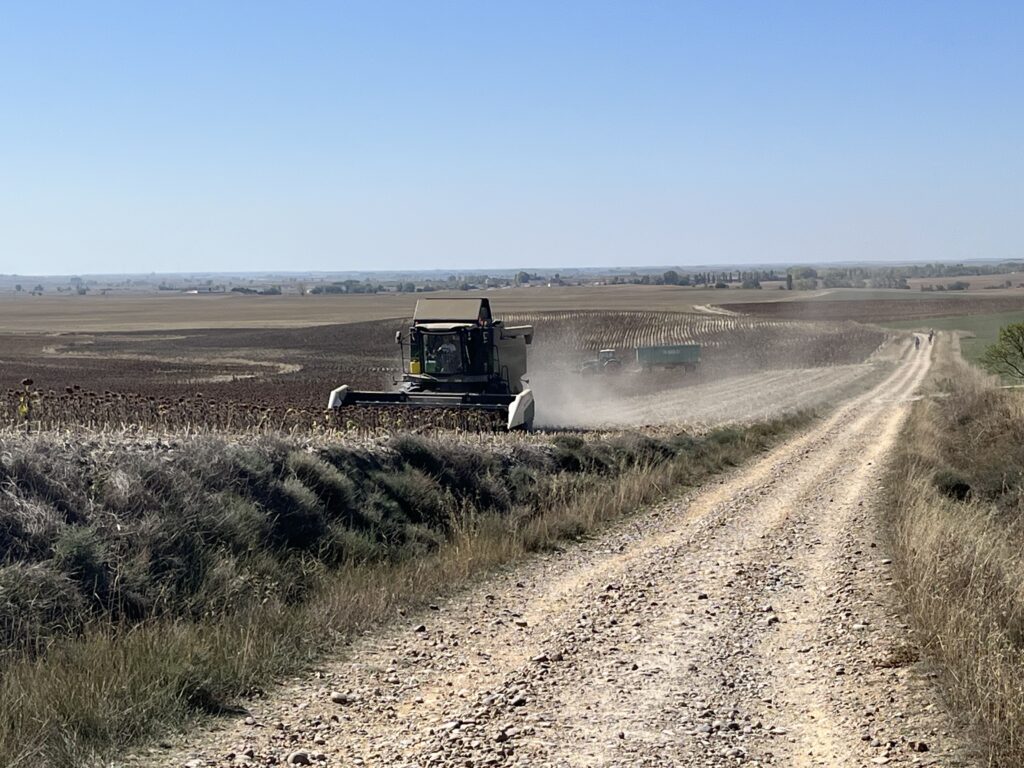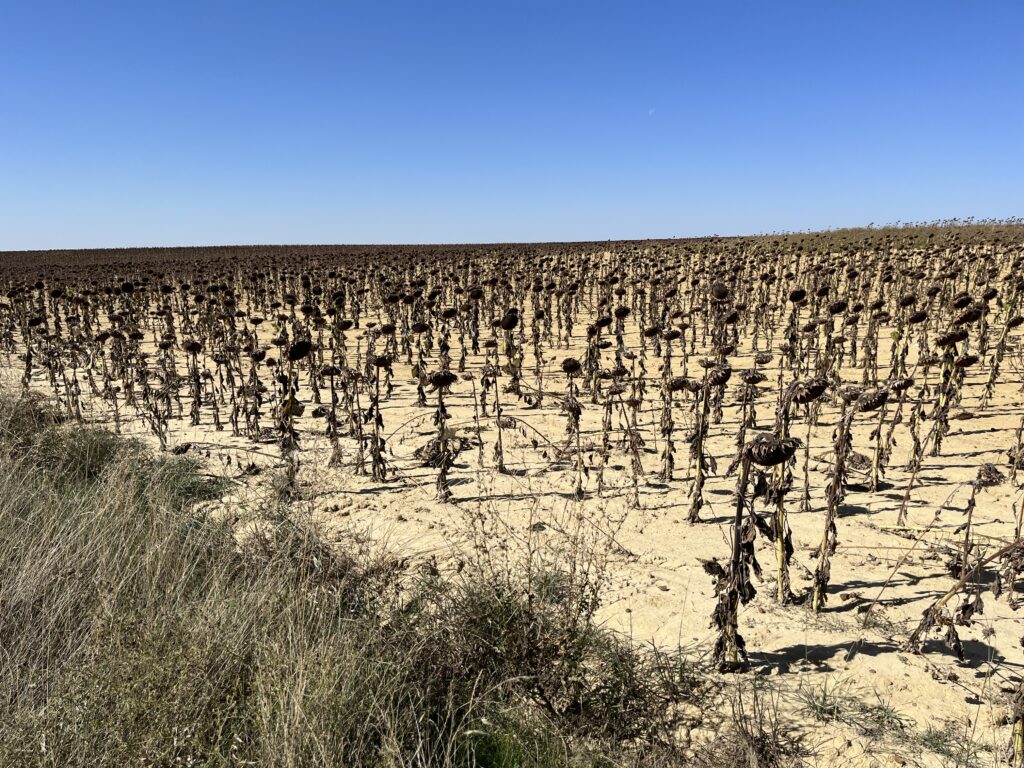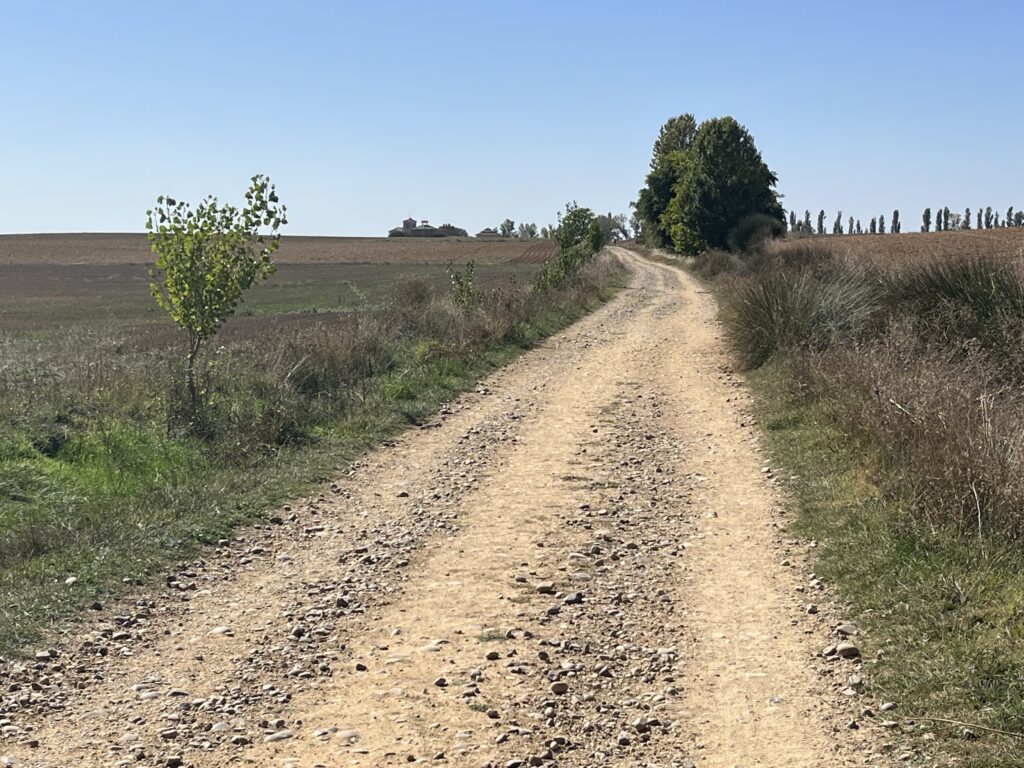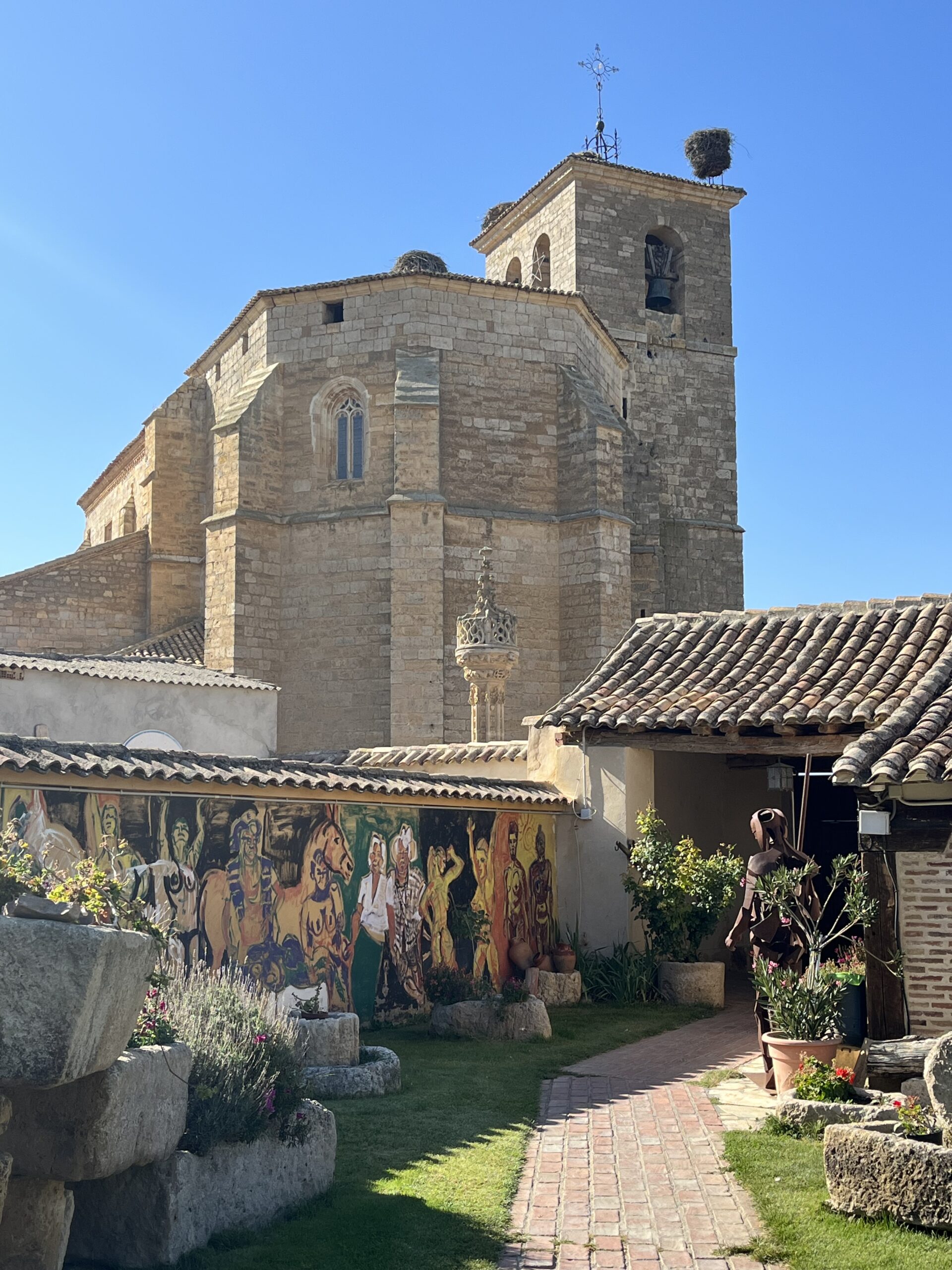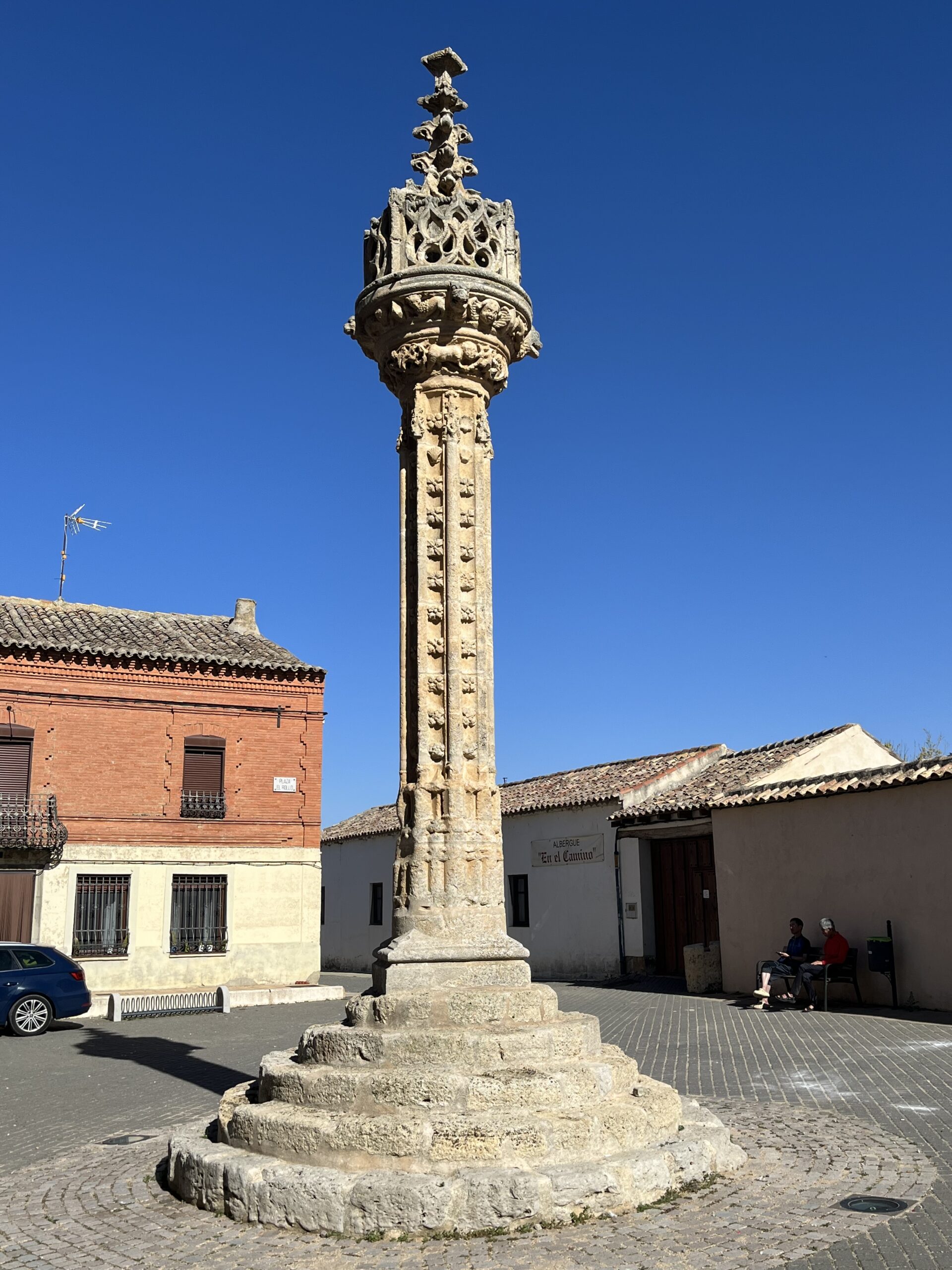Via Podiensis: The Romance of Ruins
Last night I had a great time conversing at dinner with a couple of retired German pilgrims, Marcus and Hubert, as well as a younger French guy named Thomas who started in Le Puy about a week before I did.
Hubert is currently walking his third Camino this year. In the spring, he walked the Portuguese with his daughter, later in the summer he led a tour group on the Portuguese, and now he and his friend Marcus are walking the Francés.
Today, I slept in. The albergue served breakfast starting at 7 AM, and other options were limited so I elected to stay for breakfast. I ended up leaving at about 7:30. it was quite chilly and still dark, but the rooster was crowing and the sky was beginning to lighten.
Today’s schedule was a delicate balancing act. Although it was going to get quite warm mid afternoon, I didn’t want to leave too early because there were some things along the way that I definitely wanted to see in daylight. Add to that the fact that it was going to be another relatively long walk today, and it adds up to one of the more complicated days logistically in Spain.
The way out of town was roadwalking, and about half a kilometer from my albergue the street lights ended. Moments later, I was back on the dirt and gravel Camino road. I ended up using the flashlight for about 20 minutes.
To the right, the scrubby brown hills rose to the top of the plateau, while to the left there was green farmland and, hidden by a long line of trees, the river.
I passed what is to me one of the most enigmatic ruins on the Camino. From a distance, it looks like a lonely tower, but as you get closer you realize that it is the corner or buttress of an otherwise completely vanished building.
It’s not the largest or most impressive ruins, not even of this morning, but there’s something about it that speaks to the poet in me.
At about 8:20 AM, the Camino began running parallel to a paved road. This section looks pretty new. I suspect just a few years ago walking the stretch would have meant roadwalking.
Just ten minutes later, I spotted what is, without a doubt, the most spectacular ruin on the Camino: the remains of the 14th century Monastery and Hospital of San Antón. The road passes directly under the great arch that was once a bridge connecting the church and monastery on one side with the hospital on the other.
It is an absolutely unforgettable sight to anyone who has seen it. I spent some time walking through the ruins of the great church. For many years now, there has been a pilgrim hostel nestled in among the ruins.
In a place where there was once almost certainly an altar, a rough sort of altar has been set up again. On the wall behind it was an image of the crucified Christ made of rusted metal. Normally I am not a fan of this medium for sacred art, but it is a beautiful piece of sculpture, and in the setting of the ruins it is a perfect image.
In this little open air chapel, I prayed for the intentions of the Camino.
Just around the next bend, I could see the town of Castrojeriz, nestled into the side of an improbably steep hill with the ruins of a castle at the top. I had spent a little too much time in San Antón, but I still intended to have second breakfast in this town.
The ruins of the castle of San Esteban at the top of the hill have pre-Roman origins, although the basic structure that we can see is medieval atop Roman foundations. They say the view from the castle is amazing, but also that the climb is exhausting. I elected not to explore these particular ruins, the third already this morning.
I entered Castrojeriz at about 9:15 AM and stopped at the first open café. I was just over 9 km into my day.
I began my exploration of the town’s many churches with the 13th century Santa María del Manzano. They have turned virtually this entire building into a giant museum. The north transept, under the dome of the tower and with its three Baroque altars (only one of which is gilded) seems to still be in use for its intended purpose. As a museum, what they’ve done here is amazing. I was uncomfortable here, though, for reasons I can’t quite articulate. Nevertheless, I did pray here for the intentions of the Camino.
Next I visited the 16th century Santo Domingo de Guzman. This church has been transformed into an interpretive center for pilgrims and the Camino. The presentation begins with a multimedia light show projected on the interior, with dramatic readings from the first chapter of Genesis as well as the description of Charlemagne’s vision presented in the Codex Calixtinus. For whatever reason, I thought that this was a much more fully realized use of an unused sacred space.
Fun fact: the 18th century Lisbon earthquake was strong enough to damage this building, hundreds of kilometers away. One of the pillars at the Crossing is leaning in an almost comical way. Once again, I prayed here for the intentions, and moved on.
At this point it began to occur to me that I had spent too much time in this town to entirely escape the afternoon heat. It was, in fact, now 10:30 AM, and I should’ve been at least 8 km further along than I was. Fortunately, it was still relatively cool, at least in the shade of the narrow streets.
Castrojeriz is another town being revitalized by the Camino. I noted many restored buildings, including at least half a dozen albergues. There was a crew repaving the main street as I passed through.
My final stop here was the 13th century San Juan de los Caballeros near the end of town. This particular church seems to be the one most in current use as an actual church. It was locked.
Within minutes I was out of town and in the sun. It was immediately obvious that the time had come, not only to put away the fleece, but to put up the umbrella. It was almost 10:45.
This was the Meseta, I thought, it will be easy to make up the time on the big long flat. And then I saw the ridge ahead of me. I had forgotten about this, the longest steepest climb in the middle half of the Spanish Camino, followed by the steepest descent you could imagine.
As I’ve said many times, the Meseta is flat, but it has some… wrinkles.
This particular wrinkle is known as the Alto de Mostelares, and it was my nemesis on two previous Caminos.
On the bridge over the little river right before the hill, I met a fellow from Ukraine with his two dogs. He was walking back from Santiago. He started walking January 2 on the Ukrainian border with Slovakia, the day after his contract job with Google ended. He walked all the way to Santiago and then Finisterra, and now he’s walking home. Praise God that sometimes when I think with pride of how far I’ve walked, somebody shows up to humble me.
And then I began the kilometer of 12% slope up. I reached the top, a sweaty mess, at 11:30. There’s a shelter and a little rest area at the top, and I took advantage of both for a bit. There was a heck of a view from the top, and from this vantage you could tell that the top of the hill that Castrojeriz is built around has an altitude that exactly matches that of the surrounding plateau.
There was also a lovely breeze at the top. I drank a lot of water and then started walking again across the top of the wrinkle. After hardly any time at all, it was time to go down the other side.
The down slope is 18° and paved. Needless to say, bicyclists love it, walkers not so much. And because of the danger of bicycles zooming down at high speeds, walkers can’t even really zigzag down, which would be the usual thing to do. You just have to take it carefully. At least it’s shorter than the climb up.
At the bottom, the Camino resumes its dirt and gravel surface. Now it was time for some good old fashion Meseta walking.
I think it was Neil Armstrong who first described the surface of the moon as a “magnificent desolation”. The phrase is equally applicable to the Meseta, though perhaps in a slightly different way. I passed a couple of Canadians who couldn’t handle the silence and were blasting tunes on their phone.
At about 12:20, I came to a picnic area shaded by trees. I took advantage to eat something out of my sadly depleted food stash. The tracker said I was just over 20 km for the day so far.
After this the Camino was unexpectedly asphalt. It was warm, but not burn-your-feet hot. After just about a kilometer, it was back to dirt and stone. In the distance I could see a large stone bridge cutting through a line of trees that must mean a river.
Just before the bridge is the Ermita de San Nicolás de Puente Fitero, operating as a pilgrim hostel. I briefly considered ending my day here, but the heat really wasn’t bad and I was still feeling pretty strong. I elected to continue, though I did stop in briefly to take a few quick photos and to pray for the intentions of the Camino.
Both the Hermitage and the bridge, which dates to the 16th century, have been lovingly restored to their original function.
In crossing the bridge, I left the Province of Burgos and entered the Province of Palencia. The landscape had not changed at all. It was just before 1 PM.
The Camino turned to follow the river, which meant some intermittent tree cover. Shortly thereafter, I arrived in the little farming village of Itero de la Vega.
I stopped by the village church, but it was locked. I took a moment to consider whether I should end my day here or go on the additional 8 km to my original intended destination for the day.
The town was small enough that it didn’t give me much time to decide before I had walked clean through it. It was roadwalking out of town, but it didn’t last long before I was back on the old familiar dirt and gravel road.
After this, I saw very few walking pilgrims, but plenty of bicyclists.
At 2 PM, I crested a small rise, and in the distance for the first time I could see the town that was my destination. It looked an awfully long way away.
I watched a harvester clearing did sunflowers from the field. That was a truly an impressive thing.
At 2:40 PM, I crossed a little stone bridge into the town of Boadilla del Camino. My first priority was to find a bed, but right behind that was finding a café. Conveniently I found both in one place.
By the time I showered and washed my clothes in my exhausted state, it was after four. I went over to visit the church, which was after all just across the plaza from the door of my albergue. I walked around the church, and it has three doors. Two of them were locked and one of them was bricked up.
So instead I headed over to the café which, also conveniently, faced the same plaza. Sitting in the café with a sandwich, a beer, and my notebook I can hear conversations in Spanish, English, German, and Korean. The odd thought occurs to me: why is laughter universal?
I have now completed my seventh week of walking on this pilgrimage. My total is 1190.6 km, or about 740 miles.
Date: 05 October 2023
Place: Boadilla del Camino
Today started: Hontanas
Today’s Photos!
